



www.healthcareasiamagazine.com The magazine for healthcare administrators and policy makers Display to 31 March 2023 | THE INDUSTRY’S TOP HEALTHCARE PROVIDERS IN ASIA PACIFIC HONOURED AT THE HEALTHCARE ASIA AWARDS 2022 KOH PHANGAN HOSPITAL’S ‘SMART’ MOVE TO WEATHER POWER OUTAGES MALAYSIA’S ALTY HOSPITAL INVESTED MILLIONS IN CUTTINGEDGE MEDICAL EQUIPMENT THIS ENT SPECIALIST INVENTED EXTRA PROTECTION VS AIRBORNE DISEASES DURING SURGERIES INDONESIA’S JOURNEY TOWARDS ELECTRONIC MEDICAL RECORDS ISSUE NO. 18 Healthcare Asia

Simplifying Presbyopia Correction1-9 The First-of-its-kind presbyopia-correcting IOL with wavefront-shaping technology and a clinically proven monofocal visual disturbances profile 1-4 References: 1. AcrySof® IQ Vivity® Extended Vision IOL Directions for Use. 2. Alcon Data on File, US Patent 9968440 B2, May 15, 2018. 3. Alcon Data on File, TDOC-0055575. 09 Apr 2019. 4. Alcon Data on File. TDOC-0055576. 23-Jul-2019. 5. Alcon Data on File, TDOC-0056718. 18-Jun-2019. 6. Ligabue E, et al. ACRYSOF IQ VIVITY: Natural vision at a range of distances provided by a novel optical technology. Cataract & Refractive Surgery Today. April 2020 // 7. Alcon Data on file. A02062-REP-043696, Optical Evaluations of Alcon Vivity®, Symfony*, Zeiss* AT LARA* AT LISA IOLs. Feb 2020. 8. Lawless M. Insight news. “An IOL to change the cataract surgery paradigm?” available at “https://www.insightnews.com.au/an-iol-to-change-the-cataract-surgeryparadigm/”. Accessed Date 17.07.2020. 9. Ike K. Ahmed, et al. The Vivity Extended Depth of Focus IOL: Our Clinical Experience. Cataract & Refractive Surgery Today. February 2021// Please refer to product direction for use for complete list of indications, contraindications and warnings. © 2021 Alcon Inc. 8/21 ASIA-VIV-2100019 AcrySof IQ Vivity® IOL
ADVERTISING CONTACT

Janine Ballesteros
Jenelle Samantila
Simon Engracial

Aileen Cruz aileen@charltonmediamail.com

Eunice Estudillo eunice@charltonmediamail.com
ADMINISTRATION ACCOUNTS DEPARTMENT accounts@charltonmediamail.com
ADVERTISING advertising@charltonmediamail.com
EDITORIAL ha@charltonmedia.com
SINGAPORE
Charlton Media Group 101 Cecil St. #17-09 Tong Eng Building Singapore 069533 +65 3158 1386
HONG KONG
Charlton Media Group ROOM 1006, 10TH FLOOR, 299QRC, 287-299 QUEEN’S ROAD CENTRAL, SHEUNG WAN, HONG KONG
PRINTING
Times Printers Private Limited 18 Tuas Avenue 5, Singapore 639342 www.timesprinters.com a member of Times Publishing Limited
Can we help?
Editorial Enquiries: If you have a story idea or press release, please email our news editor at ha@charltonmedia.com. To send a personal message to the editor, include the word “Tim” in the subject line.
Media Partnerships: Please email ha@charltonmedia.com with “Partnership” in the subject line.
Subscriptions: Please email subscriptions@charltonmedia.com.
Healthcare Asia is published by Charlton Media Group. All editorial materials are covered by copyright and may not be reproduced without consent. Contributions are invited, but copies of all work should be kept as Healthcare Asia can accept no responsibility for loss. We will, however, take the gains.
Distributed to all CxO, board levels, doctors, and healthcare professionals of major private/public hospitals and health ministries in ASEAN and Hong Kong.
FROM
Hospitals are now considering the utilisation of cloud technology to make healthcare more affordable and accessible on a huge scale. AI and machine learning are also at the forefront of innovative healthcare services such as early cancer detection, whilst some hospitals have joined the metaverse and bought virtual land on the platform as part of their offerings.
We sat with Dr. Kelvin Tan, Head of Adult Reconstruction Service at Tan Tock Seng Hospital, to discuss the company’s innovation ERAS, which helped reduce patients’ hospital stays from six days to only one. Read the interview on page 10. Singlespecialty orthopaedic hospital ALTY recently purchased the most advanced equipment for orthopaedic care in Malaysia. Anwar Anis, Executive Director for ALTY Orthopaedic Hospital, talks more about this investment in an interview on page 14.
The industry has proven its resilience in the face of unprecedented challenges to continue serving the people. The products, initiatives, and pandemic management frameworks of healthcare providers have allowed everyone to return to a safer environment. Healthcare Asia recognised the companies that have made significant strides in the industry this past year in the Healthcare Asia Awards 2022. See the full list of winners on page 22.

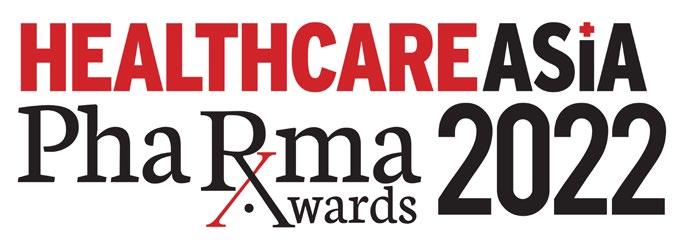

Best of health to you all.
HealthcareAsia is also the media sponsor for the following events:
THE EDITOR
Tim Charlton
PUBLISHER
& EDITOR-IN-CHIEF
Tim Charlton
PRINT PRODUCTION EDITOR COPY EDITOR PRODUCTION TEAM Jeline
Acabo
Tessa Distor Consuelo Marquez Ibnu Prabowo Aulia Pandamsari
COMMERCIAL TEAM GRAPHIC ARTIST




2 HEALTHCARE ASIA CONTENTS
on by
To access the stories online, visit the website
COVER STORY 18 Remote hospital’s ‘smart’ move to weather power outages FIRST INTERVIEW 22 EVENT COVERAGE FIND OUT WHO EMERGED AS WINNERS AT THE HEALTHCARE ASIA AWARDS 2022 ANALYSIS HEALTHCARE PROVIDERS DODGE COST PRESSURES WITH SINGLESPECIALTY HOSPITALS 19 04 Asia shows readiness to harness cloud technology for healthcare 05 Telehealth use in APAC doubled since 2019: Bain & Company 06 Hospitals launch metaverse clinics as virtual reality healthcare takes off 10 ‘People’s Hospital’ develops remedy for overwhelmed healthcare facilities 12 Pioneering infection control method during surgeries proves successful 14 Malaysian single-specialty hospital purchases cutting-edge medical equipment 20 Why Asian healthcare providers should focus on digital training for the workforce 21 What’s lagging in viral hepatitis prevention amongst pregnant women in Asia Pacific? 16 COUNTRY REPORT INDONESIA STRUGGLES WITH ELECTRONIC MEDICAL RECORD IMPLEMENTATION
Published Bi-monthly on the Second week of the Month by Charlton Media Group 101 Cecil St. #17-09 Tong Eng Building Singapore 069533 Published Biannually
Charlton Media Group SG: 101 Cecil St. #17-09 Tong Eng Building Singapore 069533 HK: Room 1006, 10th Floor, 299QRC, 287-299 Queen’s Road Central, Sheung Wan, Hong Kong
www.healthcareasiamagazine.com

Asia shows readiness to harness cloud technology for healthcare
Hospital visits, especially to a new doctor, usually require a patient to bring and sign a lot of paperwork. There is the repetitive process of filling out multiple forms with one’s basic information, and even specialised forms for one’s previous health assessment. The only thing more tedious than filling out all the forms? The long lines. The anxious waiting. The dreaded possibility that one would be made to come back and do everything all over again because of missing paperwork or the need for new tests.
For Amazon Web Services (AWS) Chief Medical Officer Rowland Illing, cloud technology is imperative in making healthcare products and services more affordable and accessible at a huge scale.
“We’re at the tipping point where patient care can be positively impacted by the power of cloud technology. The impact is allowing the democratisation of access to data, to computing power, and to services. Through those different aspects, AWS is really enabling the digitisation and utilisation of healthcare
data,” AWS’s Illing explained in an interview with Healthcare Asia.
The AWS executive added that he sees a bright spot in the Asia Pacific region, citing India’s GI Cloud Initiative (Meghraj) and Australia’s Cloud Procurement policy as signs of greater adoption to come.

“In India we’ve seen a massive adoption of cloud technology on behalf of the government. The telemedicine platform that was built during COVID was built by the government and the national health system on AWS, called eSanjeevani. And that scaled up to deliver telemedicine services for the whole of India, now 1.4 billion people have access to the platform,” Illing said.
But different APAC countries will adopt cloud technology at different paces.
“I think the level of cloud maturity differs in different countries, and we ran different
studies with several governments in Asia Pacific, with the idea to understand the barriers to cloud adoption and how we can make it go faster… more mature countries have cloud policies in place,” Illing said.
Key to cloud adoption
Government policies are key to the fast adoption of cloud technology, Illing said, citing the need for separate policies for delivering cloud services safely, procuring cloud, and having new government services be on the cloud as soon as it starts.
Education is key to helping people understand cloud technology, as there are several common misconceptions about it. Some issues about adoption, Illing said, might not even be issues at all.
“It gets talked about a lot, but data privacy is not only possible [on the cloud], it is also preferred. [Our partners] want to move to the cloud because of data privacy,” he said. He explained that AWS gives its partner healthcare providers granular access controls, making it easy for them to set up specifics on who has access to what data, when, where, and how. It has application program interfaces (APIs) for data encryption and protection.
To help bridge this knowledge gap, AWS has set a goal to train 29 million people by 2025 in cloud technology and how to deliver such services. Training has already started in the Asia-Pacific region.
For example, how can cloud technology help those from developing countries who have no access to modern technology? Illing explained that it’s not a matter of having the patients themselves connect to the cloud. The help comes more from how their healthcare providers have access to not just their data on the cloud, but also to the means to make sense of such data.
“There is an enormous challenge of coping with the vast amount of data available.
When we go to the individual patient level, there’s always been a limitation to access to data even before cloud came to the equation.”
But a patient need not have access to the internet to benefit from cloud technology. AWS partner WelTel has delivered its services to HIV-positive patients in Rwanda and indigenous communities in Canada and New Zealand through text messaging. The cloud technology is on the back end, allowing WelTel caregivers to better manage their processes so they know when and how to send these text messages to their customers.
4 HEALTHCARE ASIA FIRST
Dr Rowland Illing, Director & Chief Medical Officer, International Public Sector Health, Amazon Web Services, speaking with reporters. Photo from AWS
We’re at the tipping point where patient care can be positively impacted by cloud tech. The impact allows democratisation of access to data
ASIA PACIFIC
Telehealth use in APAC doubled since 2019: Bain & Company
Adoption of telemedicine in the Asia Pacific (APAC) region has doubled with safety risks attributed to the growth, survey results from management consulting firm, Bain & Company, indicated.
A survey of 1,750 consumers across APAC showed that telehealth adoption went up by 47% in China in 2021, from 24% in 2019. The firm said it would grow by 76% in two years.

In Indonesia, it was at 25% in 2019, growing by 51%. Bain & Company said it would increase by 72% in 2024.
There was no 2019 data available on the telehealth use for Malaysia and the Philippines but both countries adopted the digital practice in 2021 with 30% and
48%, respectively. Bain & Company sees that both markets’ telehealth services will grow by 70% in 2024.
India registered 29% in telehealth use in 2019, then grew by 59% in 2021. It will soar by 68% in 2024, Bain & Company reported.
Singapore posted 16% of telemedicine use three years ago, it rose by 34% in 2021 then it will be up at 60% in 2024.
In Australia, telehealth utilisation increased ninefold from 5% in 2019 to 45% in 2021. The firm said it will go up by 56% in 2024.

More than five in 10 physicians also disclosed that more than 25% of their primary consultations could be
With the rise of artificial intelligence (AI) and machine learning-focused health tech startups in India, big companies are looking for opportunities to invest and expand their footprint in the country, according to a report from GlobalData.
Against this backdrop, AI-enabled made-inIndia products are expected to offer advanced healthcare solutions and innovations and improve patient care in India.
Tech giant Oracle recently announced plans to expand its data centre and application base in India, as it sees the country as one of the major contributors in developing AI-based applications for the global healthcare industry.
GlobalData’ said India was amongst the top three medical device markets in Asia-Pacific in 2021 and is expected to grow at a compound
annual growth rate of 7.9% through 2030.
GlobalData’s medical devices analyst Pratibha Thammanabhatla said a growing disease burden, over-reliance on medical imports, and high costs are amongst the challenges currently being faced by the Indian medical industry.
“Surge in investment by foreign multinationals and the development of AI-enabled (artificial intelligence) domestic products will meet the current challenges and propel the market forward,” Thammanabhatla said.
The availability of a skilled workforce, more focus on AI, and favourable policies such as the new National Medical Devices Policy 2022 and production-linked incentive scheme are also expected to help the country to develop innovative indigenous health products and become self-sufficient.
delivered virtually in the coming years.
Physical checkups and interactions may have revived in some cases, Bain & Company said the digital delivery models are still permanent in the healthcare landscape triggered by the global health crisis.
Data privacy
Nearly half of people living with HIV and (PLHIV) in the Asia and Pacific region said data privacy issues is one of their obstacles in using telehealth services, according to Gilead Sciences recent study.
Specifically, 43% of PLHIV and 35% of individuals at risk (IARs) are concerned on cybersecurity risks when using telehealth whilst nearly half of IARs or 47% said they feel discomfort about the lack of in-person contact when using telehealth.
Although, in the region, there is an uptick of telehealth services usage for HIV treatment over the past years.
The biggest increase was seen in the Philippines for PLHIV and IARs with 71% and 83%, respectively. This was followed by Vietnam and Malaysia.
Convenience, flexibility, and improved access to additional HIV information were the top three reasons why they used telehealth.
The study were based on replies from 1,531 respondents, which is composed of 787 PLHIV and 744 IARs, across nine markets in the Asia Pacific. The survey responses were received from June to September 2022.
HEALTHCARE ASIA 5 FIRST
Data
privacy issues is one of the obstacles in using telehealth services
RISING AI-FOCUSED HEALTHTECH STARTUPS IN INDIA LURE IN BIG COMPANIES: REPORT
The firm expects telemedicine adoption to grow through 2024
THAILAND
Hospitals launch metaverse clinics as virtual reality healthcare takes off
Indian healthcare group Yashoda Hospitals from Hyderabad is the latest healthcare provider to join the metaverse trend by buying virtual land on the platform.
In a statement, the hospital management said this move will allow the healthcare group to render its treatment on the metaverse and even employ metaversians.
Yashoda Hospitals is also the first healthcare group in India to tap the metaverse for its services.

Dr. Abhinav Gorukanti, Head of Yashoda Hospitals, said establishing their presence on decentralised land will ramp up their efforts to accept decentralised technology.
“We will continue to upgrade and invest in making our digital infrastructure futureready,” he added, pointing out that the hospital has since been open to adopting digital technology.
UAE healthcare firm starts virtual hospital Other hospitals in Asia also followed suit in the metaverse hype. Thumbay Hospitals, a United Arab Emirates-based healthcare firm,
had announced its plans to create a virtual hospital on metaverse to talk with patients and improve patient experiences.
In a statement from Thumbay.com, the full-fledged virtual hospital will be built in a multi-phased project on a metaverse platform, which will give patients an immersive experience in healthcare. There will be a patient experience centre, a walkthrough of hospital and services, teleconsultation, multiple doctors consulting a case in a virtual clinic, and avatars in the local language and dress to talk to patients in the medical tourism department.
There will also be the “first AID and preventive health programs using AR/VR and AI programs to educate patients and suggest treatment plans.”
Thumbay Virtual Hospital will also provide health tips on inpatient hospital and room experience for elective surgeries, a surgery
that can be done in advance.
Under phase one of the Thumbay patient experience, the application will be developed by visualising the Thumbay Medicity.
“The user will be able to create a base avatar. They could customise their avatar based on hair colour and skin tone, which will have two options each. The receptionist at the hospital would greet the users in their native language,” read the statement.
Commenting on the integration of metaverse in its business, Thumbay President Thumbay Moideen said: “We are very excited to take up these initiatives and be in line with the developments of the future and explore all opportunities to develop our core business in Education, Healthcare, Research and Wellness domains.”
Metaverse research in South Korea
A news report showed that a Medical Metaverse Research Society was rolled out through the joint sponsorship of the Seoul National University Metaverse Lab and the Seoul National University Hospital Innovative Medical Technology Research Center Smart ICT Lab.
This research society seeks to promote academically in the prevention, treatment, and management of medical illnesses and ailments through Metaverse innovations.
The research society will also back public and private partnerships and industry-academic cooperation and plan to establish a framework for medical metaverse experts via training projects and global academic exchanges.
SEA hospitals
Two Southeast Asian hospitals previously saw big opportunities in using virtual and augmented reality to enhance telemedicine services, with patients one day potentially tapping the metaverse for recovery.
These hospitals, Malaysia-based IHH Healthcare and Indonesia’s Siloam International Hospitals began using telemedicine in 2020 when the severe respiratory disease crisis started.
They also used technology to reach patients hit by stringent health protocols or those living in remote areas. These hospitals also started exploring AI and data analysis to improve patient treatment.
Now, they think virtual reality (VR), augmented reality (AR), and the metaverse will expand into healthcare.
6 HEALTHCARE ASIA FIRST
Yashoda Hospital joins the metaverse. Photo from Yashoda Hospitals website
We will continue to upgrade and invest in making our digital infrastructure future-ready
ASIA PACIFIC
Vietnam’s Leading Private Healthcare Network

ABOUT US
Hoan My was the very first private healthcare facility in Vietnam. Over our 25-year history, Hoan My is proud to have built a strong reputation for delivering affordable, high-quality, patientcentric healthcare. We always strive to improve the quality of healthcare in Vietnam, contributing to the prosperity and well-being of our nation.
OUR MISSION
To advance the health and well-being of all Vietnamese people, through a network of innovative and integrated patient-centric healthcare clusters in large cities.
Explore our app for virtual consultations, appointment booking and more. www.hoanmy.com


HEALTHCARE ASIA 7
We deliver heartfelt care
15 hospitals 7 clinics 2,900 beds 5,500 staff 4m patient visits annually
award
Frost & Sullivan “Vietnam Hospital of the Year”
iOS Android
Five Digital Trends Shaping Asia Pacific Healthcare
By Stella Ramette, Director, Healthcare Customer Relations & Sales, South East Asia for InterSystems.

With rising consumer demands, rapid advancements in technology and more complex care needs, healthcare organisations are under pressure to deliver digital-first, seamless and connected healthcare experiences.
Thankfully, innovation in digital health is flourishing in the Asia Pacific region. But what trends are shaping the future of healthcare delivery? And how can healthcare leaders ensure their organisations are equipped to take advantage of the emerging opportunities?
1. Rising data volumes create complexity
Data has long been a powerful ally for healthcare organisations in APAC, helping us make better-informed clinical and business decisions. However, the rate of data creation has exploded.
As data volumes continue to rise, so does our difficulty managing it. In 2022, healthcare organisations are searching for ways to integrate and harmonise their data to make meaningful connections that lead to actionable insights.
One solution, according to Gartner, is an enterprise data fabric, a way to continuously identify and connect data from disparate applications to discover unique, business-relevant relationships between the available data points.
2. AI adoption in healthcare accelerates
Artificial Intelligence (AI) has the potential to make care better, faster and more accessible for all. However, significant concerns about patient safety and a lack of quality data have slowed the progress of AI initiatives in healthcare.
However, fuelled by technological advances and greater investment in infrastructure to support AI, we’re seeing an acceleration in the adoption and application of AI technology in healthcare.
McKinsey’s analysis of The State of AI in 2020 found that healthcare organisations were leading the way in AI investment, with 44% of healthcare organisations surveyed saying they have increased investment in AI in each major business function.1
With the healthcare sector catching up to other industries in AI maturity, data will be both a critical success factor as well as a barrier to the successful application of
Stella Ramette, InterSystems
providing the information needed to improve decisions and outcomes across the healthcare continuum.
4. Telehealth moves to virtual care
Telehealth isn’t merely a passing pandemic trend. It has become an important part of the way we deliver healthcare today. But in 2022, telehealth is becoming more than a mechanism to deliver care outside the hospital. We’re seeing a shift towards virtual care, a more holistic way of treating patients outside the hospital.
As we move beyond isolated video interactions and phone calls, the challenge is now how to seamlessly blend remote and in-person care. Finding ways to integrate telehealth into our digital systems and enable it to meet individual care needs whilst improving patient access and experience is one of the key challenges facing APAC healthcare leaders.
5. The Internet of Medical Things
AI. What foundations do we need to get right before we are able to realise the full potential of AI technology?
3. Interoperability becomes standardised According to a Sage Growth Partners report, more than half (51%) of healthcare executives say data integration and interoperability are the most significant barriers to achieving their strategic priorities related to data analytics.2
This is due to the amount of data being created and the number of sources that data is flowing from. Medical devices, patient records, hospital databases and data lakes all house crucial data within the healthcare system. Without a way to connect these siloed data sources, accessing real-time data remains an uphill battle.
Standards such as Fast Healthcare Interoperability Resources (FHIR) and tools such as Application Programming Interfaces are closing this gap in the explosion of data and sources in the region, making data more accessible, computable and usable. These two approaches will make synthesising data from multiple sources more achievable,
Rapid innovation in medical technology has led to an increasing number of connected medical devices that are helping healthcare professionals generate, collect, analyse and transmit data. This connected ecosystem of data and devices – referred to as the Internet of Medical Things (IoMT) – is revolutionising the way healthcare is delivered.
The IoMT has the potential to transform fragmented healthcare systems into a connected system of care powered by real-time patient data. This opportunity is not lost on health professionals in the Asia Pacific region who are rapidly adopting IoMT solutions. But as the number of devices grows, so does associated data. This data deluge can be overwhelming for healthcare providers to manage and could prevent us from unlocking the full potential of IoMT.
To understand more about these digital trends and how they are shaping healthcare industry, download the free InterSystems e-book “5 Trends Shaping the Future of Digital Health in 2022 | Asia Pacific” here:
1 https://www.mckinsey. com/business-functions/ mckinsey-analytics/ourinsights/global-survey-thestate-of-ai-in-2020
2 https://www. intersystems.com/sagedata-report/

8 HEALTHCARE ASIA
THOUGHT LEADERSHIP ARTICLE
Trends shaping Asia Pacific digital health


Asia Pacific’s digital healthcare landscape is evolving rapidly, driven by rising consumer demands, rapid technology advancements, and more complex healthcare needs.



Healthcare organisations are under pressure to deliver digital-first, seamless, secure, and connected healthcare experiences to keep pace with digital








evolution and deliver first-class patient care.

There are five major trends shaping the future of healthcare delivery in Asia Pacific that healthcare providers need to be aware of to ensure their organisations are equipped to take advantage of the emerging opportunities.

HEALTHCARE ASIA 9
Download the full complimentary eBook: www.InterSystems.com/sg/HealthTrendsAPAC
‘People’s Hospital’ develops remedy for overwhelmed healthcare facilities
Its surgical care programme via ambulatory setting cuts hospital stays from six to one day.
Singapore’s Tan Tock Seng Hospital (TTSH) has launched a new recovery ambulatory model that has seen hospital stays reduced from six days to just one. TTSH performs approximately 700 knee replacement surgeries annually for older Singaporean residents with debilitating knee osteoarthritis. As a public hospital, it cannot afford to take a step back on these elective surgeries, even when COVID-19 overwhelmed its bed capacity.
What helped the hospital overcome this challenge was the enhanced recovery after surgery (ERAS) model it developed in 2017. Through ERAS, there was a progressively significant reduction in patients’ length of hospital stay, and eventually TTSH was able to perform knee replacement surgeries at its ambulatory surgery centre. Patients who undergo knee replacements are allowed to continue their healing period at home after just one to two days, some were even going home on the same day after surgery, effectively considered an outpatient procedure.
Partial knee replacements, a minimally invasive type of knee replacement, had previously undergone a successful trial at the TTSH Ambulatory Centre during pre-pandemic times. Building on this success, Total Knee Replacements (TKR) were integrated seamlessly into the ambulatory centre starting in January 2021, which was at the height of the COVID-19 pandemic in Singapore. This allowed TTSH to care for non-COVID patients with debilitating knee osteoarthritis whilst allowing its main hospital to continue care and treatment for COVID-19 patients.
“With our successful transition of TKR to ambulatory surgery, we could continue most of our TKR procedures in spite of manpower or bed shortage in the main building setting,” Dr. Kelvin Tan, TTSH Head of Adult Reconstruction Service, told Healthcare Asia.



Singapore’s TTSH plans to expand the amount of space devoted for ambulatory and day surgery by 2030 in a precinct-wide development.
ERAS shortens hospital stay and reduces costs
ERAS was introduced in 2016 for colorectal surgery and pancreas and liver surgery, amongst others. The programme was later adopted in TKR, where there are three main phases: pre-operatively, perioperatively, and post-operatively. Pre-operative phase involves empowering patients and changing the patient’s mindset through pre-operative
education and optimisation of medical conditions, nutrition, and muscle strength.
Ashton Neoh, TTSH Principal Physiotherapist, said that patients started performing exercises earlier to facilitate early discharge for TKR surgery patients.
“We prepare the patient earlier at the pre-op phase. We have identified patients who are weaker or patients who have mobility levels that are not as good as the others. During the pre-op phase, the therapist or the coordinator will teach the patient some exercises so they can strengthen their legs even before they get admitted for the surgery,” said Neoh.
“It will encourage early mobilisation. Patients can start moving out from the bed and start walking around on the same day of surgery. That would facilitate their early discharge, which is not easy for the physiotherapists because it requires such a big mindset shift to do so,” he added.
In the perioperative phase, spinal anaesthesia is usually administered to allow knee replacement surgery to be performed. Medications are also given pre-emptively to reduce blood loss and therefore blood transfusions, nausea, vomiting, and giddiness episodes are avoided. This allows patients to be in the optimal state to be mobilised and discharged early post-operatively.
Lastly, the post-operative phase includes the optimisation of pain control, early mobilisation without cumbersome intravenous drips and drains, post-discharge care coordination and check back on patients.
For patients, this means an absolute reduction in costs with the ability to recover in the comfort of their own homes. For public hospitals, this allows higher turnover for elective operations, reduces bed crunch and allows the hospital to focus its resources on other emergency conditions including COVID-19 patients.
“Public [hospital] patients will tend to save more on their hospital stays as compared to patients in private hospitals, who generally wouldn’t mind paying more for an extended stay,” said Tan.
10 HEALTHCARE ASIA INTERVIEW
Public [hospital] patients will tend to save more on their hospital stays
TTSH plans to expand the amount of space devoted for ambulatory and day surgery by 2030 (Photo: Dr. Kelvin Tan, Head of Adult Reconstruction Service, Tan Tock Seng Hospital)
For patients, a shortened hospital stay means an absolute reduction in costs (Photo courtesy of Tan Tock Seng Hospital)
SINGAPORE
Ashton Neoh


















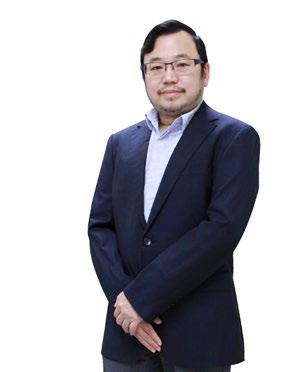

Pioneering infection control method during surgeries proves successful
This ENT specialist invented extra protection vs airborne diseases during surgical procedures.
patients or visitors,” she added.
Aerodrop Duo, as Chew pointed out, is a dual-function protective scope mask and filtration system. The mask is one-size-fits-all, transparent, hypoallergenic, has ports for scope access, and serves as a physical barrier itself. In addition, suction to the mask powered by the medical grade HEPA serves as a second layer of protection against any potential leakages from the mask edges.
The fully titratable HEPA filtration unit then serves as the third layer of protection to filter the ambient clinic air, even if there are no procedures performed. A HEPA filtration can trap tiny particles, according to John Hopkins University, a US-based research university.
“The idea is that of source control where we try to limit the contamination to the source itself before it even gets into the environment. This is a good idea because there are no other existing measures that will allow us to resume service as efficiently,” Chew.
Tested and tried
Before using the device in ENT procedures, Chew said they conducted experiments to determine whether the Aerodrop Duo can prevent aerosol and droplet contamination.
When performing scope procedures, Dr. Chew Hui Sing, an ear, nose, throat (ENT) specialist from Tan Tock Seng Hospital (TTSH) in Singapore, found the dangers of aerosols or droplets from unmasked patients who are coughing and sneezing, which could lead to the spread of potentially infectious diseases.

Chew said they need an innovative tool to prevent the risk of infection transmission during procedures such as nasendoscopy.
“During this procedure, sometimes, despite the use of topical anaesthetic spray, patients may cough and sneeze. Coughing, sneezing, talking, or even breathing result in a significant amount of aerosols and droplets that are being released into the environment,” Chew told Healthcare Asia
The ENT specialist thought of creating a tool to protect patients and healthcare workers during ENT procedures.
After consultation with the National Healthcare Group’s (NHG) Centre for Medical Technologies & Innovations (CMTi) and its industry partner, The Biofactory, Chew invented Aerodrop Duo, an environmentally-friendly dualfunction high-efficiency particulate (HEPA) filtration scope mask system. The BioFactory, a biomedical incubator in Singapore, is also the co-inventor of the device.
“We know that COVID-19 is not going to be the first nor the last pandemic in the history of human pandemics that we encounter,” said Chew.
“It is important that we take measures to bring about a safer method of performing such procedures, such that this service does not get disrupted in the next pandemic. It can also allow us to resume efficiently and safely without compromising the safety of healthcare workers or any
They conducted a pilot study of 15 healthy participants performing aerosol-generating activities with the Aerodrop Duo and compared it with a surgical mask and without a surgical mask.
The experiment showed that there is a slower particle emission rate for the Aerodrop Duo during breathing, speaking, and singing compared with other interventions (such as in masked or unmasked situations).
In conclusion, Chew’s team found that their innovative product is the first in the market to be connected to a portable HEPA filtration (of a minimum level of H13).
Fully reusable, eco-friendly
Data from the Ministry of Health in Singapore showed that the amount of biohazardous waste from hospitals and clinics generated and disposed of went up by 5% per annum from 2016 to 2020.
With this data in mind, the Aerodrop Duo developers wanted the device to be sustainable. They made parts of the medical device sterilisable, which reduces waste and carbon footprints.
Clinicians will also be more comfortable when performing scope procedures because they do not need to be in full personal protective equipment (PPE) or N95 masks, Chew said.
This makes the device sustainable enough to reduce medical waste such as bulky surgical suits.
“You can guarantee safety, whilst reducing the use of PPEs.” You reduce the number of disposables and consumables that everyone has to use,” said Gabriel Tan, Programme Director at The BioFactory.

12 HEALTHCARE ASIA INTERVIEW
There are no other existing measures that will allow us to resume service as efficiently
Aerodrop Duo is an improved version of a mask
(Photo: Dr. Chew Hui Sing, ENT Specialist, Tan Tock Seng Hospital)
SINGAPORE
Gabriel Tan




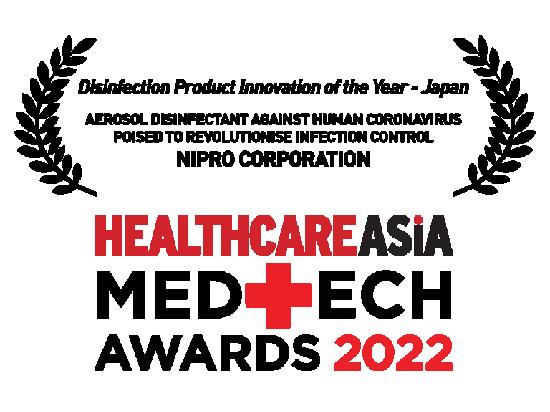





Three-chamber electrolyzed-water generator method Reduction of indoor airborne/surface-adhering bacteria and virus ¹ A wide range of disinfection effects ¹ 99 99%%¹ Reduction rate of airborne virus overover Reference: 1. Data on file, Nipro Corporation. PURCHASE ONLINE NIPROASIA.COM.SG
Malaysian single-specialty hospital purchases cutting-edge medical equipment
ALTY invested millions to provide the most advanced equipment for orthopaedic care.
Malaysia’s newest orthopaedic hospital faced a challenge when starting up – how their patients could get the best services without breaking the bank. With this in mind, the team at ALTY, or “Adding Life to Years” Hospital in Malaysia, purchased some multi-million cutting-edge technology focusing on orthopaedic care.
Unlike big hospitals, ALTY did not invest in technology that is unrelated to orthopaedic treatment. After consultations with its partners and surgeons, ALTY spent US$3.4m (RM15m) to acquire advanced medical equipment such as imaging systems for accurate diagnosis of orthopaedic diseases to help doctors evaluate their patients more accurately.

These medical devices were not only used to deliver advanced care to patients but also to help other orthopaedic surgeons in Malaysia.
From its soft opening in January 2022 to its official launch in July 2022, the hospital has so far performed 295 orthopaedic surgeries.
Healthcare Asia spoke to Anwar Anis, Executive Director for ALTY Orthopaedic Hospital, to share how one of the single-specialty hospitals in Malaysia will operate to offer “better quality” of orthopaedic treatment to patients.

What is “Adding Life to Years” and what can Malaysians expect from the hospital?
ALTY is one of the first single specialty orthopaedic hospitals in Malaysia. We certainly feel that whilst we’re not the first, we’re the most complete, having a full set of surgeons.
This is a hospital that is a partnership between surgeons, and also, a private healthcare investment platform, TE Asia, which has been developing single specialty hospitals around the region for the last five to six years. ALTY, as the name stands for, is adding life to years. We believe with our approach to orthopaedics, we can certainly help people live better, not so much about extending their life, but simply having a good quality of life from an orthopaedic perspective.
We also had surgeons transitioning from their previous place of employment to ALTY and this took place all the way until 2022. As of July 7, we are a full-fledged single-specialty orthopaedic hospital with eight resident surgeons and close to 150 staff to provide the best care for patients.
What did the launch of the ALTY Hospital mean for orthopaedics in Malaysia?
The launch of the hospital was almost symbolic to a certain extent but it was also about being ready to now serve the community, both in Kuala Lumpur, Malaysia and around the region as well. We now have an orthopaedic hospital that is geared towards providing the best standard of care for general orthopaedics but also a place where the general public and even other doctors can bring their patients to do complex orthopaedic procedures.
In ALTY, we have very experienced surgeons who have partnered with TE Asia. But because they are here together
as partners, this is a place where a surgeon doesn’t do things alone, especially for complex procedures with significant benefits to the patient. We are the first in Malaysia to install an advanced imaging system called EOS that is very much catered to orthopaedics, especially for scoliosis, but also the first in Malaysia to install a weight-bearing magnetic resonance imaging (MRI).
We have these technologies that are good for orthopaedics and as such, we will be providing these services not just to the surgeons in ALTY but we’ve already expanded them and made them available to other orthopaedic surgeons in Kuala Lumpur. We certainly are going to make orthopaedic care more accessible to the general community, not just to the team of surgeons that we have.
What is unique about ALTY’s services?
Diagnostics, which are specific to orthopaedics. We are the first to install a couple of technologies and that enhances the procedure. We can obtain a clearer image, a better report. An innovative way of doing the diagnostics itself will certainly
14 HEALTHCARE ASIA INTERVIEW
The launch of the hospital was symbolic; it was about being ready to now serve the community
We are going to make orthopaedic care more accessible to the general community (Photo: Anwar Anis, Executive Director,, ALTY Orthopaedic Hospital)
ALTY Operating Theatre
MALAYSIA
give the surgeons a different angle.
On weight bearing, for example, the fact that you do an MRI in a standing position gives the surgeons a better view of how their spine is compressed, or how their joints react when they are standing rather than lying down.
We are also offering robotics that’s growing in Malaysia. We hope to make it more mainstream, so that patients can benefit from what robotic surgery can do for joints at the moment.
We also have a 3D C-arm that allows our surgeons to do an almost CT (computed tomography) like scan in the operating theatre that allows them to know whether their implants are in the right place before a patient is closed up; rather than doing the procedure and then the patient is sent back to the ward and a day or two later doing a CT scan and then determine if there was some misalignment or some corrections that need to be made.
Since this involves a lot of cutting-edge technology, would this come at a premium cost for the general public? Quite contrary, one of the advantages of a single specialty is that we’re able to use economies of scale and bring the costs down. We have eight surgeons who have gotten together and agreed that there is one partner vendor for joint implants and a partner vendor for spine implants. This is quite rare, although we may think otherwise, whether it’s a public or private hospital.
To be able to consolidate and negotiate the best implants at the best price, we offer this back to the patient. Despite being a single specialty hospital for orthopaedics, having some very established experienced surgeons and using some good
implants, ALTY is very competitive in the market and offers it at a very cost-effective rate to the patients. Additionally, even for diagnostics, we keep it very competitive. I think the proof is in the fact that we have doctors from other hospitals sending patients to us for their scan. Now, we even have the Ministry of Health sending patients over to us and we’re just about to finish discussions about having a university hospital send their patients over to us for the advanced imaging system as well. I think we certainly are making the technology accessible by keeping the pricing very affordable.
How did ALTY hospital convince its management to buy these cutting-edge technologies?

I would split it into different aspects. One is we are a partnership between the doctors and TE. As a partnership, what we do is unlike multi-specialty hospitals and large hospitals, there is a robust discussion between the surgeons and TE even though we’re setting up the hospital to look at what makes sense from an orthopaedic perspective. We don’t have to then invest in technology that is quite general that needs to cater to non-orthopaedic needs.
You can imagine in a large multicenter hospital, whatever technology you buy, needs to be as generally applicable as possible because there are so many specialties that are competing for those resources.
However, in ALTY, we know that these technologies are being put to use predominantly for orthopaedics. Thus, it wasn’t much of an issue in deciding to invest in these multimillion-dollar technologies because we know that the focus is on a particular specialty.
INTERVIEW
Indonesia struggles with electronic medical record implementation
Only 13% of hospitals have optimally implemented electronic medical records, according to a survey by PERSI.
PeduliLindungi, an application that is commonly used by Indonesians during the COVID-19 pandemic to access certificates and information about vaccines and to check in at public places. Healthcare facilities must be connected to an integrated platform that combines various applications from various health industry players that have been provided by the government, namely SATUSEHAT.
Hospital concern
The Indonesian Private Hospitals Association (ARSSI) supports the implementation of electronic medical records in hospital services.
Most of the 3,000 hospitals in Indonesia still use traditional and manual record-keeping of their patient’s medical histories. This causes bottlenecks in healthcare procedures. To push healthcare institutions to digitise records and digitalise processes, the Health Ministry released a new regulation that gives them until the last day of 2023 to transition to an electronic system.
The Regulation of the Minister of Health Number 24 of 2022 was released in August. This supports the implementation of the sixth pillar of Health Transformation, which is the health technology transformation. The other five pillars of Health Transformation include primary service, hospital referral services, health resilience system, health financing system, and health human resources.
“This is done to provide convenience because the public can obtain traceable diagnosis results,
and data information from electronic medical records can facilitate policy-making and public access to health services,” said Chief of Digital Transformation Office of Health Ministry, Setiaji in a press conference.
The regulation requires electronic medical records and processes starting from patient registration, distribution of patient medical records that can be carried out between internal units of healthcare facilities, recording of patient clinical data by medical personnel, coding and reporting of medical records in internal healthcare facilities, as well as the transfer of medical record contents in order referral to other healthcare facilities.
The process of filling out and distributing medical records will be based on the patient’s consent, and this medical record data is regulated by the Health Ministry for its storage and security standards.
Later, patients can access their electronic medical records through
“The unique geographical condition of Indonesia as an archipelagic country requires good and equitable quality health services. In addition, the online health service system can reduce bottlenecks that still exist in hospitals today, such as the problem of long queues because patients are queuing back and forth,” said Secretary General of ARSSI, Ichsan Hanafi to Healthcare Asia.
However, Hanafi highlighted the obligation to organise medical records by different hospitals’ capabilities. “There are more than 3,000 hospitals in Indonesia, of which 65% are private hospitals with varying hardware, human resources, and financial conditions so that they have different adaptability,” he said.
Hanafi noted that only a few private hospital groups are listed on the stock exchange and have strong financial health, whilst the majority of private hospitals are sole owners. He suggested that the Health Ministry make a module.
The results of a quick survey by the Indonesian Hospital Association (PERSI) in March 2022 regarding electronic medical records and hospital digitisation, with 646 hospitals as respondents, showed that only 13% of respondents had implemented electronic medical

16 HEALTHCARE ASIA
COUNTRY REPORT: INDONESIA
Data information from electronic medical records can facilitate policy-making and public access to health services
Indonesia as an archipelagic country requires good and equitable quality health services
records optimally. It also shows 32% of respondents stated that they will only implement electronic medical records and as many as 17% have no plans to implement electronic medical records. In this quick survey, the questions asked to respondents include what kind of Hospital Information Management System module is used, what types of electronic data are available in the electronic medical record application, how hospitals develop digital transformation, where hospitals put the location for electronic data storage and hospitals’ outlook about digitalisation maturity.
“If you look at the results [of the survey] this needs attention because the situation is not the same [amongst hospitals,” said PERSI’s Head of Data and Information Compartment, Anis Fuad at a press conference.

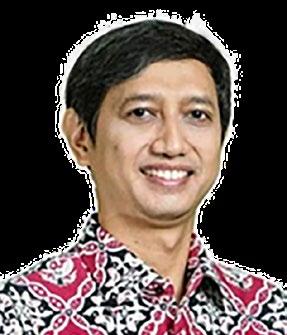

Digital Maturity Index
To overcome the various hospital conditions in the implementation of electronic medical records, the Health Ministry will map all health facilities with the Digital Maturity Index.

“From the index, it will be known which health facilities are ready or not. There will be a level, and then from there we will use it to implement this policy,” said Setiaji.
The Digital Maturity Index is an instrument for measuring hospital digitisation. The assessment through this index includes hospital governance, organisation, and human resources such as how the hospital’s IT strategic plan is, how many human
resources will focus on networking or become programmers, and how much the hospital has budgeted for IT. Another assessment is a matter of information system architecture about how the front office and back office are as well as the application of electronic medical records.

Hospital data and interoperability standards such as variable and metadata standards and data coding standards are included in this index. Likewise, the capabilities of IT system infrastructures, such as data centres and internet connections as well as reporting and analysing hospital data, for example, how to use dashboards and analytics in the hospital.
Setiaji explained that, the Health Ministry will cooperate with the Communication and Information Technology Ministry in ensuring that the use of electronic medical
records is not problematic in terms of the internet. “There are healthcare facilities which are located in remote and marginal areas where it is difficult to get an internet signal, for that we can not directly implement data synchronisation but can be done gradually, for example, synchronisation is done once a day,” the Health Ministry chief said.
The Health Ministry is also working with the National Cyber and Encryption Agency (BSSN) to strengthen the security of medical record data. Setiaji said the Health Ministry has prepared guidelines on how to secure data and prepare electronic medical records with security that meets government standards. “We will also intensively conduct socialisation for the application of this electronic medical record. Because this is a cultural change. Socialisation will also guide medical personnel to understand more about IT, because they will be the ones to input patient data. It is hoped that this can be accelerated where by the end of 2023 everything has been connected and digitised,” he said.
In the Health Digital Transformation Roadmap launched by the government, 2022 is the year to develop architectural designs— one of them is an integrated health service system platform, which was built in the previous year. In 2023, implementation will begin and in 2024 it will be an expansion of the coverage of an integrated health facility information system.
HEALTHCARE ASIA 17
COUNTRY REPORT: INDONESIA
Patients can access their electronic medical records through PeduliLindungi, an app commonly used during the height of the pandemic
We will intensively conduct socialisation for the application of this electronic medical record. Because this is a cultural change
Socialisation will guide medical personnel to understand more about IT, because they will be the ones to input patient data
Anis Fuad
Setiaji
Ichsan Hanafi
Remote hospital’s ‘smart’ move to weather power outages
Koh Phangan Hospital saved millions in maintenance expenses after digitising network infrastructure.
health crisis, Puttanaporkrattana said they were able to reach Eaton, which travelled to their location despite stringent travel rules.
Compared to manual generators, UPS systems can power automatically and identify power grid disturbances as well as issues in power supply.
“The power supply needs to have a super load capacity and produce more power within the allowable variation in output voltage,” the hospital director pointed out.
When monsoons hit Thailand between July and October, Koh Phangan Hospital experiences electricity outages that cannot be resolved by generators. The health institution is located on the country’s most remote island in Surat Thani, whose only source of power is the main electrical grid on the mainland of Nakorn Sri Thammarat province.
These power surges pressure medical staff as they disrupt their medical treatment and patient care, Koh Phangan Hospital Director Dr. Worawut Puttanaporkrattana told Healthcare Asia
“When the medical staff is overworked, they are more prone to human errors in their assessments, which can make a big difference in diagnosis and treatment,” he added.
These overloads and voltages also damaged expensive medical equipment and started fires in pharmacy rooms.
Uninterrupted power supply
Four years ago, the medical institution started to transition from a 30-bed hospital to operating as a “smart
We have seen a significant drop in power damage and disruptions to our equipment since the installation of the UPS system
hospital.” Currently, it is in the process of expanding to a 50-bed healthcare facility and purchasing advanced machines for digital transformation. Amongst the hospital’s priciest equipment are echocardiographic machines, a type of ultrasound scan that looks into heart and blood vessels, and exercise stress test treadmills, each costing THB1m.
To keep up with its expansion, Koh Phangan Hospital invested in a threephase uninterrupted power supply (UPS) system.

“We have seen a significant drop in the frequency of power damage and disruptions to our equipment since the installation of the intelligent UPS system,” said Puttanaporkrattana.
The UPS system, produced by Eaton, has an extended battery module function that matches the health institution’s IP address. The IP address will immediately activate an alarm and send a report when a power surge or outage occurs. It allows the hospital to remotely oversee and shut down the UPS across its network. When the hospital’s efforts to resolve power surges were hampered by the global
“UPS systems with user-friendly interfaces that are easy to read and operate can help reduce errors in daily operations whilst those that use lithium-ion batteries have longer lifespans and take up significantly less space compared to traditional battery technologies. This not only frees up valuable space within medical facilities but also reduces the overall cost of operation,” Puttanaporkrattana said.
As cyberattacks pose threats to hospitals, Puttanaporkrattana advised that hospitals should also consider end-to-end cybersecurity services when buying a UPS system - from initial audit to an in-depth analysis of threat and vulnerability to life-cycle management.
Shorter waiting time
Koh Phangan Hospital’s daily patient footprint in its outpatient department (OPD) went up by 33% from about 150 patients in 2018 to 200 in 2019. The number of patient entries swelled to 350 in 2020 and peaked between 400 to 700 in 2021.
Currently, the daily patient traffic in the OPD is 200 to 300 patients, but Puttanaporkrattana believes their patient footfall will gradually increase as Thailand sees more visitors from the pandemic.
Even as the number of patients increase, waiting time and treatment durations have declined nearly 25% –from about one hour and 15 minutes to only under an hour.
18 HEALTHCARE ASIA COVER STORY
Koh Phangan Hospital invested in a three-phase UPS system
THAILAND
ANALYSIS: HEALTHCARE COST
Healthcare providers dodge cost pressures with single-specialty hospitals
Markets are experimenting with single-specialty care and ambulatory care centres.
With healthcare spending continuing to rise, one way to limit cost is increase specialisation. The 2020 INSEAD study showed that Southeast Asia’s healthcare expenditure will grow to US$740b by 2025. Hospitals are coping with this by investing in single-specialty hospitals. TE Asia Healthcare Partners, for instance, established the ALTY Orthopaedic Hospital in Malaysia, which focuses on orthopaedic care.
Boston Consulting Group Partner, Anurag Agrawal sees single-specialty care as a way to combat cost pressures amidst international political conflict.
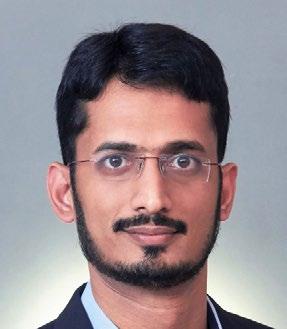

Agrawal said even as the reopening of borders revived elective surgeries and medical tourism, which were suspended during the pandemic, recessionary pressures and inflationary pressures could pose risks to healthcare providers’ operations.
“Some of the global conflicts that we see are their supply chain disruptions and these have persisted since COVID-19 times, as economies have boomed and as demand has come back, the supply chains and global value chains have been phenomenal,” said Agrawal, who has 13 years of experience in healthcare consulting across Southeast Asia, the US, Europe, and India.
“We see some of these challenges playing out leading to cost pressures on many healthcare players.”
Ambulatory care centres
Aside from single-specialty care, he said tapping ambulatory care centres can also help mitigate cost issues.
“We see [health] providers experimenting more with ambulatory care and with single-specialty care, which allows providers to mitigate the full cost of serving patients in a tertiary care facility and ensures that patients can still be served within the same quality but in a step-down or in a facility, which provides similar care, but at a significantly controlled cost,” explained Agrawal.
An example of ambulatory care
Digital
centres was adopted by Tan Tock Seng Hospital in Singapore, where they used these daycare surgery centres to conduct elective surgeries that were halted during the pandemic. It allowed them to provide elective surgeries in ambulatory care centres whilst attending to COVID-19 patients in their main hospital.
“Patients would perhaps want to visit healthcare facilities only for the most severe ailments but would want to visit the local ambulatory care setting for some of the relatively minor ailments,” said Agrawal.
Phygital to move forward
During the pandemic, Agrawal underscored the shift from traditional healthcare treatment to digitisation.
“The first of which is a change in care models. Traditionally, healthcare has been delivered in hospitals. It has been delivered physically in person with doctors interacting with patients. What COVID has done is, once it has moved this physical healthcare towards virtual or I would say phygital healthcare, a mix of physical and digital,” he said.
Another consultancy group, Bain & Company, found that telehealth adoption in the Asia-Pacific region has doubled since 2019.
But Agrawal said massive uptake in digital health has “tempered down,” allowing a shift in physical and digital
or phygital healthcare treatment.
On digital healthcare, Dr. Ann Aerts, Head of non-profit group, Novartis Foundation, cited the best practices of Singapore where “digital and data infrastructure is welldeveloped,” said Aerts.

“That’s a big, big strength because many other countries are still lagging behind,” Aerts added.
She also underscored how the government in the Lion City required healthcare professionals to comply with online training on telehealth consultations and services.
In 2020, the Ministry of Health in Singapore offered a telemedicine course to guide doctors on delivering telehealth services, which will focus on patient safety.
The latest study from Bain & Company showed that more than 90% of consumers in Australia, China, India, Indonesia, Malaysia, the Philippines, and Singapore are seeking a single touchpoint to coordinate their healthcare needs in 2021.
Whilst the digital expectation is being served by primary care markets in China and Indonesia, some consumers in Singapore still want physical clinic visits.
“In these markets, digital healthcare isn’t replacing established systems, but rather, it’s enabling more connected, hybrid experiences,” Bain & Company said.
HEALTHCARE ASIA 19
Single-specialty care is a way to combat cost pressures
healthcare isn’t replacing established systems, but enabling hybrid experiences
Anurag Agrawal
Ann Aerts
SOUTHEAST
ASIA
Why Asian healthcare providers should focus on digital training for the workforce
A digital healthcare expert cited Singapore’s e-training for health workers as the best example.
When there was a disruption of virtual health and care during the two-year strict healthcare, Asian healthcare providers did not take a step back in ramping up their medical innovation by enforcing hybrid models of healthcare treatment. A 2021 McKinsey report showed that digital health in Asia could create up to $100b in value in the next three years, up from $37b in 2020.
But for the non-profit firm, Novartis Foundation, simply tapping technology is not enough. Countries are expected to implement clear policies to make sure there is equal and inclusive access to virtual services for patients all over their population. This was what Dr. Ann Aerts, Head of Novartis Foundation, tackled in their 2022 joint report with the World Health Organisation (WHO).
The study found that every nation in the Asia Pacific needs to advance its preparedness in deploying digital care through an inclusive policy framework of six main pillars. These pillars include governance and regulation, design and processes, data and technology, business models, people and workforce, and partners and stakeholders.
“These six pillars. They range from governance, where you talk about licencing liability, to data and infrastructure which is very good in Singapore already, to people and workforce,” said Aerts in an interview with Healthcare Asia.
Although these six pillars are equally needed, Aerts said much has to be done for improving digital skills for the workforce in Asia.
The McKinsey report also indicated that the average number of doctors per 1,000 people in the region is lower than the OECD average. The WHO also found that there is a global shortage of nine million nurses, some of the most affected are in Asia.
“Asia has been adopting virtual health and care, very rapidly and largely, so I do feel that one of the very important pillars is the people and workforce’s digital skills,” she said.

She noted Singapore’s e-training and telehealth provision for healthcare professionals as one of the best examples of enhancing the healthcare workforce.
“It’s true that not every healthcare professional is as digitally savvy as every other person. You also need to ensure that people from all population groups have access to the services when they are delivered virtually. I can imagine in Asia, the rapidly ageing population may be one of the specific groups to target with digital upskilling, for example,” Aerts pointed out.
In 2020, the Ministry of Health (MOH) offered a telemedicine course to guide doctors on delivering telehealth services, which will prioritise patient safety.
Who should be liable
Telemedicine services in the Asia Pacific have increased to provide remote healthcare services to patients. A Bain & Company study showed that telehealth use in the Asia Pacific region doubled since 2019.
Aerts said identifying the liability of healthcare professionals
Asia has been adopting virtual health and care very rapidly and largely
in case of a misdiagnosis or device malfunction is still unclear everywhere in the world.
To resolve this, Aerts said there must be a governance system in place to ensure quality assurance for healthcare professionals who provide virtual services.
For instance, Germany set guidelines on telehealth services and circumstances that doctors are liable for.
In the Novartis-WHO report, Germany put in place the Digital Healthcare Act 2019 and Digital Health Application Ordinance 2020 to determine the liability for incorrect or incomplete information or malfunction.
Amongst the notable provisions in Germany’s policies is the doctor will be “rarely blamed” if they do not know or did not have knowledge of the risk in question if there is an unforeseeable malfunction of the app.
Germany’s policies also indicate that manufacturers may be liable for possible breach of duty in publishing adequate instructions when a patient incorrectly uses an app.
“It’s very important to clarify this liability question, which standards do telehealth services have to apply to? When is the doctor responsible for a failure or mistreatment or misdiagnosis,” said Aerts.
Helping low-income population
Asked about which market in Asia enforced good policies for adopting virtual care, Aerts cited healthcare innovations in China, such as the Ping An Good Health.
The Teleconsultation app, Ping An Good Health, previously Ping An Good Doctor, conducted 900 million consultations daily in more than 300 Chinese cities. The platform’s users went up 70% between the first quarters of 2020 and 2021.
“Everything is delivered online, both the consultation, whether it’s in an internet hospital, or an internet health centre, or an internet pharmacy, and you get your treatment delivered that home,” said Aerts.
20 HEALTHCARE ASIA INTERVIEW
ASIA PACIFIC
There must be a governance system in place to ensure quality assurance for healthcare professionals who provide virtual services (Photo: Dr. Ann Aerts, Head, Novartis)
What’s lagging in viral hepatitis prevention amongst pregnant women in Asia Pacific?
Lack of screening and medication hound elimination of disease amongst pregnant women.
hen the World Health Organisation (WHO) unveiled a goal and roadmap in a bid to eliminate viral hepatitis in the Asia Pacific (APAC) region, a non-government organisation, Coalition to Eradicate Viral Hepatitis in the Asia Pacific (CEVHAP), stepped in to form policies that will help achieve this target.
The WHO’s goal is to reduce the prevalence of hepatitis B, a liver infection stemming from the hepatitis B virus (HBV), in the region. According to its 2018 regional framework to eliminate viral hepatitis from 2018 to 2030, APAC has a significant burden of hepatitis B, with 115 million people in the Western Pacific region at risk of living with chronic hepatitis B whilst 39 million people in Southeast Asia region are sickened with the hepatitis B infection.
Whilst there are already gains in the eradication of hepatitis, such as the widespread vaccination programmes in the region, CEVHAP co-chairman Saeed Hamid said there is much to do, specifically for treating pregnant women, who can transmit the disease to their children.
“A birth dose hepatitis B vaccine, which is one of the most effective interventions, 67% get a birth dose and 33% don’t. For the three-dose vaccine, we’re doing quite well, with 91%. But for treating pregnant women, that’s not doing very well, that’s just 8%,” Hamid told Healthcare Asia.
Screening not enough
There is a lack of screening or testing for Hepatitis B amongst pregnant mothers in the Asia Pacific, which affects WHO’s target to prevent viral hepatitis, Hamid said.
According to a peer-reviewed US journal, American Family Physician, the principal screening to uncover hepatitis B viral infection is a serological test or blood test for HBsAg, which can be done at the first prenatal visit.
“If you don’t test, you don’t know who is positive and you can’t figure out whether giving them treatment would be helpful or would not be needed,” said Hamid.
Aside from this, pregnant women are also hesitant when taking medications for hepatitis B, Hamid pointed out.
“Although [medications] have been proven to be completely safe and devoid of any side effects. I think work needs to be done on this. It is an effective intervention that will certainly stop the transmission to the newborn,” he said.
CEVHAP said in its previous reports that hepatitis B can be effectively mitigated with antiviral medication such as nucleoside analogues, including entecavir and tenofovir.
These types of medication are safe for controlling viral replication and reducing liver infection.
Uneven treatment of Hepatitis C
World health leaders are also seeking to eliminate Hepatitis C, an inflammation of the liver triggered by the hepatitis C virus (HCV).
CEVHAP said unsafe injection practices and health care settings are the major transmission of the virus. There is no
available vaccine for it but it is curable through direct-acting antivirals.
In the Asia Pacific, however, Hamid said the disparity in therapies to reduce HCV was caused by price issues.
“Asia Pacific is a mixture of high-income countries, middle-income countries, and low-middle-income countries. That unevenness has caused disparities in the access to therapies because of various reasons, price negotiations, and availability,” he said.
He cited that some lower and middle-income nations of Asia Pacific offer cheap and generic medications to help treat people infected with HCV.
“[Lower and middle-income countries] have allowed us to treat a large number of people or at least the ability to treat a large number of people and therefore try and eliminate hepatitis C. That’s what countries like Pakistan, India, and Bangladesh are focusing on having announced large elimination programs, which will treat millions,” Hamid said.

For some countries like Malaysia, Hamid said pricing negotiations for HCV medications are slow.
“It has been difficult to gain access [to medications]. For example, Malaysia, where the price, they do not have easy access to generics, and the negotiations of pricing with the standard companies with the originator products have been very slow,” said Hamid.
Currently, the Asian region has experienced the majority of the global disease burden caused by chronic hepatitis B and hepatitis C, with 63% of viral hepatitis-related infections worldwide happening in APAC.
HEALTHCARE ASIA 21
It has been difficult to gain access [to medications]
WThe disparity in therapies to reduce HCV was caused by price issues (Photo: Saeed Hamid, Co-chairman, CEVHAP) PACIFIC
ASIA INTERVIEW
Find out who emerged as winners at the Healthcare Asia Awards 2022
As the world begins to recover from the massive disruptions brought by the COVID-19 pandemic, the healthcare industry has certainly proved its resilience towards any challenges and capability to withstand any hurdles to continue its mandate of serving the people.
Healthcare providers and companies have now made breakthroughs, as well, thanks to the innovative minds in the sector. Their products, initiatives, and COVID management frameworks have allowed everyone to return to a safer environment.
Moreover, they are now incorporating these breakthroughs in their day-to-day operations amidst its effectiveness in managing crises and providing quality health care to patients.
To recognise the companies that have made significant strides in the healthcare industry this past year, Healthcare Asia is proud to introduce the winners of its awards programmes through hotel and
HEALTHCAREASIAAWARDS 2022
Al-Futtaim Health
Primary Care Provider of the Year - UAE Service Innovation of the Year - UAE
Aster Al Raffah Hospital, Sohar Home-care Initiative of the Year - Oman
Aster Hospitals
COVID Management Initiative of the Year - UAE Smart Hospital Initiative of the Year - UAE
Aster Sanad Hospital COVID Management Initiative of the Year - Saudi Arabia
AVISENA WOMEN’S & CHILDREN’S SPECIALIST HOSPITAL Women’s & Children’s Specialty Hospital of the Year - Malaysia Ayala Healthcare Holdings, Inc. (AC Health) COVID Management Initiative of the Year - Philippines
CRL Diagnostics Pvt. Ltd Diagnostics Provider of the Year - India
Fakeeh University Hospital Hospital of the Year - UAE
Femto Research Group Co., Ltd. Service Innovation of the Year - Thailand
Gold Coast Hospital and Health Service Public-private Healthcare Partnership of the Year - Australia
Hoan My Medical Corporation
COVID Management Initiative of the Year - Vietnam Marketing Initiative of the Year - Vietnam
Hoan My Thu Duc International General Hospital Hospital of the Year - Vietnam Hospital Pusrawi Sdn. Bhd. Islamic Private Hospital of the Year - Malaysia
virtual presentation and interviews from 25 April onwards.
The awards programmes, Healthcare Asia Awards, Healthcare Asia Pharma Awards, and Healthcare Asia Medtech Awards 2022, aim to recognise industry players that have risen above the challenges brought by the pandemic and have gone beyond to innovate to better serve customers.
The victorious companies were also accompanied by interviews as they shared their thoughts about winning the prestigious awards programme.
This year’s nominations were chosen by an elite panel of judges consisting of Chris Hardesty, Pureland Venture Partner; Partha Basumatary, EY-Parthenon Director, Life Sciences & Healthcare, Strategy Lead; and Sarah Butler, PwC Global Health Service Leader.

Check out this year’s winners:
Island Hospital Medical Tourism Initiative of the Year - Malaysia
KPJ Johor Specialist Hospital Marketing Initiative of the Year - Malaysia
KPJ Tawakkal KL Specialist Hospital COVID Management Initiative of the Year - Malaysia
Kuwait University Hospital Hospital of the Year - Yemen
Makati Life Medical Center Public-Private Healthcare Partnership of the Year - Philippines
Malabar Institute of Medical Sciences Ltd (Aster MIMS), Calicut Vaccination Delivery of the Year - India
Mariano Marcos Memorial Hospital and Medical Center Health Promotion Initiative of the Year - Philippines Marketing Initiative of the Year - Philippines
Medcare Hospital LLC Specialty Hospital of the Year - UAE Patient Care Initiative of the Year - UAE Patient Safety Initiative of the Year - UAE
National Kidney and Transplant Institute Employee Engagement of the Year - Philippines Service Delivery Innovation Initiative of the Year - Philippines
ProtectHealth Corporation Sdn Bhd Public-private Healthcare Partnership of the Year - Malaysia Vaccination Delivery of the Year - Malaysia
Pun Hlaing Hospitals
COVID Management Initiative of the Year - Myanmar Patient Safety Initiative of the Year - Myanmar Service Delivery Innovation Initiative of the Year - Myanmar Hospital of the Year - Myanmar
Quality HealthCare Medical Services Ltd. Primary Care Provider of the Year - Hong Kong Patient Care Initiative of the Year - Hong Kong Service Delivery Innovation Initiative of the Year - Hong Kong
22 HEALTHCARE ASIA EVENT: HEALTHCARE ASIA
AWARDS
Regency Specialist Hospital
Neurology Specialty Hospital of the Year - Malaysia Customer Service Initiative of the Year - Malaysia
Samitivej Children Hospital Specialty Hospital of the Year - Thailand
Samitivej Public Company Limited COVID Management Initiative of the Year - Thailand
Smile Foundation COVID Management Initiative of the Year - India
Sri Kota Specialist Medical Centre Most Improved Community Hospital of the Year - Malaysia
St. Luke’s Medical Center - Quezon City Patient Care Initiative of the Year - Philippines Patient Safety Initiative of the Year - Philippines
St. Luke’s Medical Center Global City Management Innovation of the Year - Philippines
SUNWAY
FERTILITY CENTRE
Fertility Patient Experience Initiative of the Year
Sunway Medical Centre Hospital of the Year - Malaysia Smart Hospital Initiative of the Year - Malaysia
The Medical City Hospital of the Year - Philippines Medical Tourism Initiative of the Year - Philippines
The Medical City South Luzon Secondary Hospital of the Year - Philippines ESG Program of the Year - Philippines
TrueCare2U Sdn Bhd Home-care Initiative of the Year - Malaysia
Vejthani Hospital Hospital of the Year - Thailand
Western Sydney Local Health District Service Innovation of the Year - Australia
Klinik Yap & Partners Malaysia & Klinik Union Medic Malaysia Primary Care Provider of the Year - Malaysia
Dr. Haidar Al Yousuf, Al-Futtaim Health CEO of the Year

HEALTHCAREASIA MEDTECHAWARDS 2022

Advanced Sterilization Products
Employee Engagement Initiative of the Year - India Sterile Processing Product Innovation of the Year - South Korea
Alcon Pte Ltd.
Cataract Product Innovation of the Year - Singapore
Align Technology Orthodontic Product Innovation of the Year - Singapore
ASAHI INTECC CO., LTD.
Guidewire Technology Product Innovation of the Year - Japan
CarnetDia App Mobile App of the Year - Cambodia
Glaukos Corporation
Glaucoma Product Innovation of the Year - Singapore
Guardant Health AMEA Oncology Product Innovation of the Year - Asia
HuiHe Healthcare Company Cardiology Product Innovation of the Year - China
HydraFacial, A Beauty Health Company Marketing & Communications Initiative of the Year
Medtronic Digital Innovation of the Year - Singapore Medtronic Philippines Inc. ESG Program of the Year - Philippines Endovascular Product Innovation of the Year - Philippines
Nipro Corporation Disinfection Product Innovation of the Year - Japan
QIAGEN Business Services (Manila), Inc Employee Engagement Initiative of the Year - Philippines
True Digital Group Co., Ltd Telemedicine Platform Initiative of the Year - Thailand
United Imaging Healthcare Imaging Product Innovation of the Year - China
Wipro GE Healthcare Digital Innovation of the Year - India

Zimmer Biomet Care Management Initiative of the Year - Singapore
HEALTHCAREASIA PHARMAAWARDS 2022


Amgen K.K. Patient Advocacy Program of the Year - Japan
Bristol-Myers Squibb Digital Innovation of the Year - Japan Diaceutics Pte Digital Innovation of the Year - Singapore
HEALTHCARE ASIA 23
Al-Futtaim Health







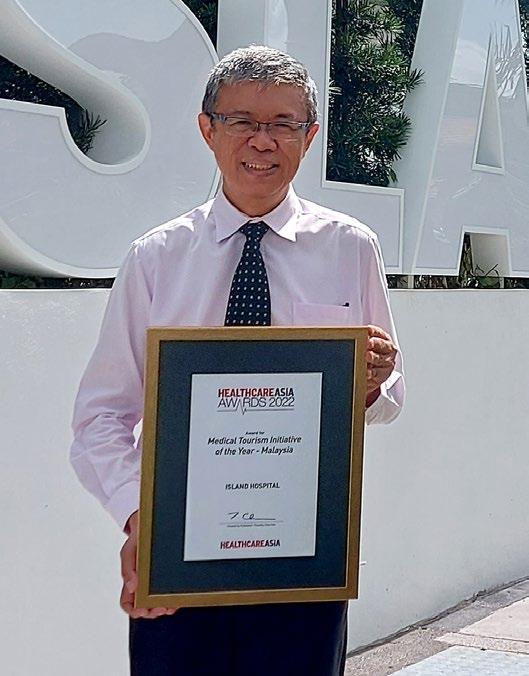


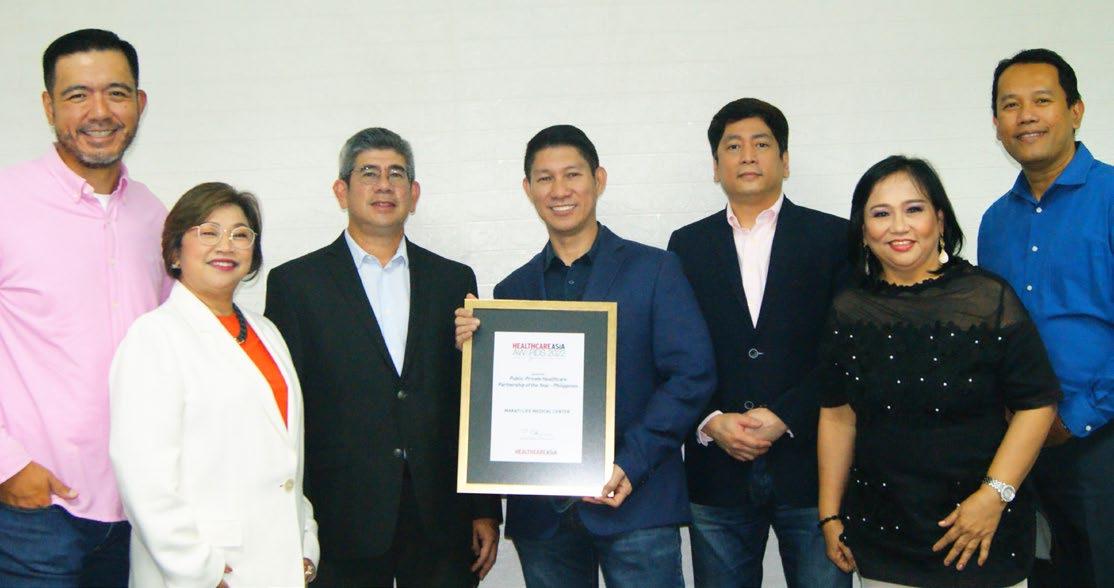

24 HEALTHCARE ASIA EVENT: HEALTHCARE ASIA
AWARDS
AVISENA WOMEN’S & CHILDREN’S SPECIALIST HOSPITAL
Ayala Healthcare Holdings, Inc. (AC Health)
Femto Research Group Co.,Ltd.
Hoan My Medical Corporation
Hoan My Medical Corporation
Hoan My Thu Duc International General Hospital Island Hospital
KPJ Johor Specialist Hospital
Malabar Institute of Medical Sciences Ltd (Aster MIMS), Calicut
KPJ Tawakkal KL Specialist Hospital
Makati Life Medical Center








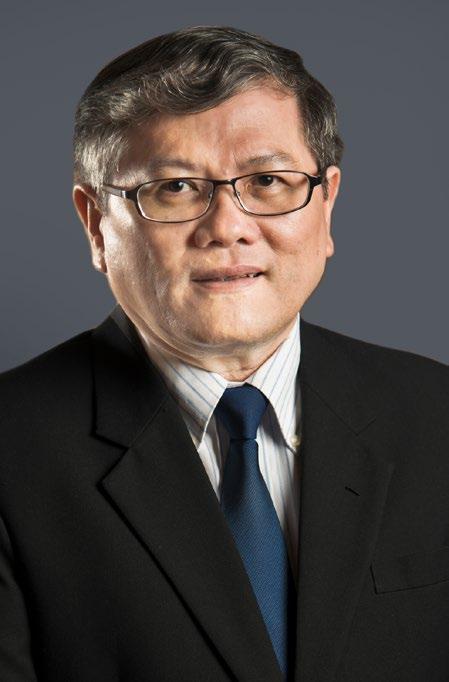







HEALTHCARE ASIA 25
National Kidney and Transplant Institute
Pun Hlaing Hospitals Quality HealthCare Medical Services Ltd.
Regency Specialist Hospital
Sunway Medical Centre
The Medical City
HuiHe Healthcare Company
The Medical City South Luzon
Vejthani Hospital






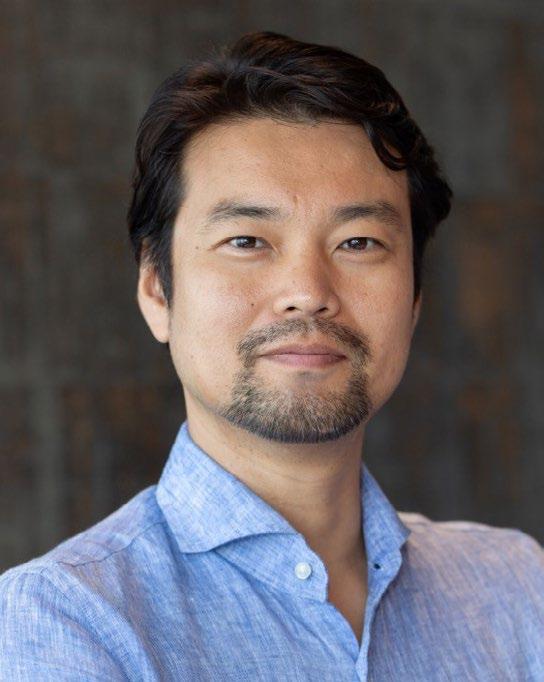



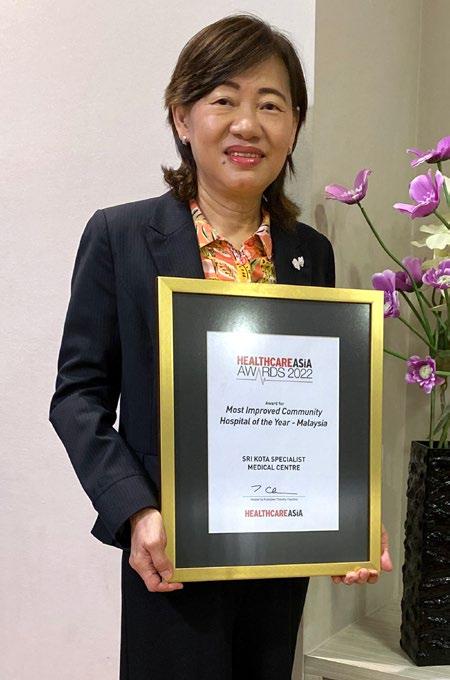



26 HEALTHCARE ASIA EVENT: HEALTHCARE ASIA AWARDS
Amgen K.K.
Alcon Pte Ltd.
HydraFacial, A BeautyHealth Company
Bristol-Myers Squibb
Klinik Yap & Partners Malaysia Klinik Union Medic Malaysia
Medtronic Philippines Inc. Glaukos Corporation Align Technology
Sri Kota Specialist Medical Centre
Samitivej Children Hospital Samitivej Public Company Limited






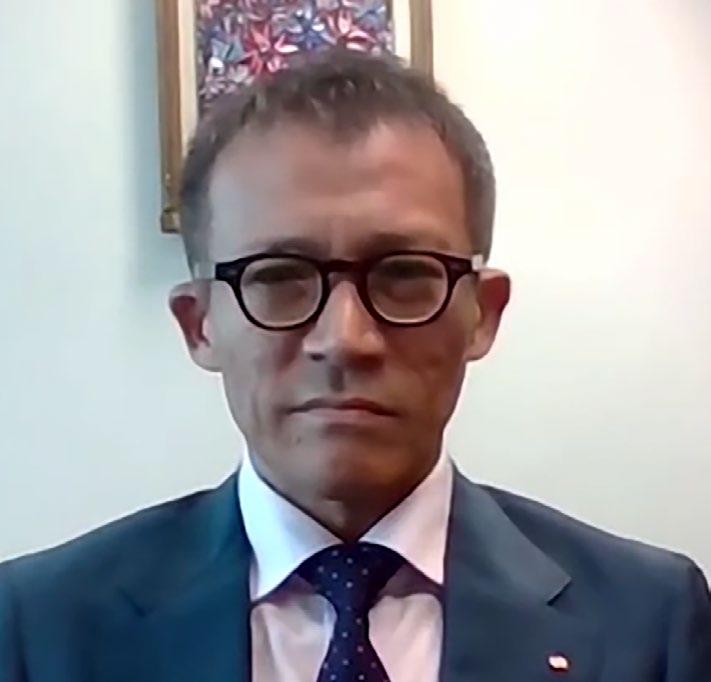



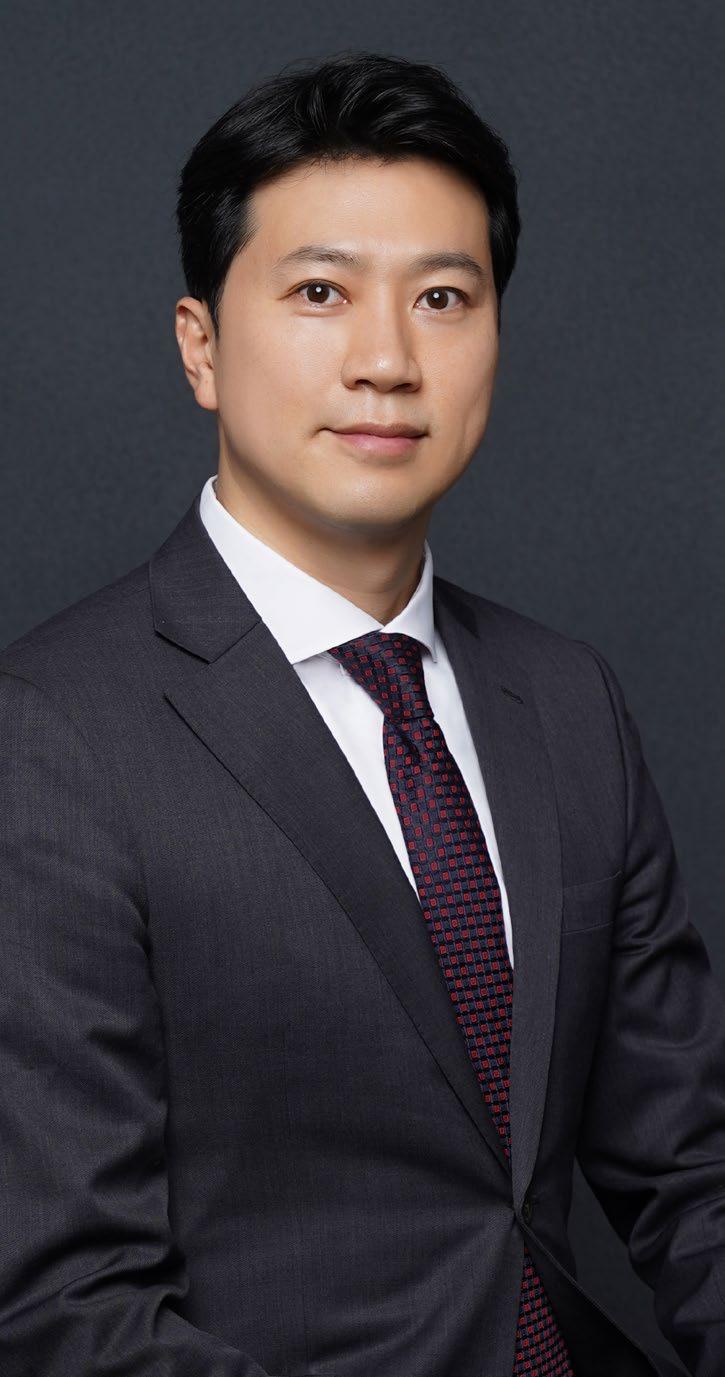

HEALTHCARE ASIA 27
True Digital Group Co., Ltd
Nipro Corporation
TrueCare2U Sdn Bhd
ASAHI INTECC CO., LTD.
United Imaging Healthcare Advanced Sterilization Products
Zimmer Biomet
Guardant Health AMEA
PRIMARY CARE PROVIDER OF THE YEAR - UAE SERVICE INNOVATION OF THE YEAR - UAE

Al-Futtaim Health achieves the Platinum Accreditation
Another important milestone has been achieved by Al-Futtaim Health, the healthcare division of the Al-Futtaim Group. It’s a journey that began with the pursuit of the highest standards of care and patient safety by winning the Gold Accreditation from Accreditation Canada for nine clinics, including a state-of-the-art HealthHub Day Surgery Center and being the first chain of primary care clinics to be internationally accredited in the UAE.

Following on the heels of this victory, is yet another moment of pride for AlFuttaim Health as this time, HealthHub Clinics was also awarded a Platinum Accreditation in May 2022, making it the first chain of primary clinics in the UAE to do so, across three of its clinics:

• HealthHub Clinics, Karama
• HealthHub Clinics, Tecom
• HealthHub Clinics, Muteena
This is an important milestone as the Platinum status recognises the
foundational elements of quality and safety surrounding client-centred care.
It is also another level of excellence that has been achieved by Al-Futtaim Health, closely following its Gold Accreditation earlier this year, for its commitment to continuous improvement of its healthcare offering to the community. The recognition sets the benchmark for Al-Futtaim Health as a top-quality healthcare provider, built on unwavering trust.
As a part of this accreditation process, Al-Futtaim Health also underwent an evaluation by the Qmentum Global Program for its Virtual Health Standards and achieved an impressive 97.8% based on a survey that met the required organisational practices and the highest international quality standards.
Commenting on this momentous triumph, Dr Haidar Al Yousuf, Managing Director, of Al-Futtaim Health, said, “We are extremely pleased to receive
this global recognition as it once again demonstrates our ambition to raise the bar in our approach to patient safety and high-quality healthcare services whilst being a young, vibrant homegrown brand at the heart of the community in the UAE. Being the first group of clinics to achieve international accreditation in the UAE and winning the Platinum category of accreditation is proof that our journey of excellence never stops.”
Elaborating further on the high ratings received for Virtual Health Standards, he added, “Achieving recognition for virtual health excellence also reflects our recent introduction of digital-next healthcare initiatives in telehealth, such as the SmartDoc and the launch of Smart Clinics, a first of its kind in the UAE. As always, the spirit of innovation constantly propels us forward in enhancing the well-being of our people here in the UAE.”
28 HEALTHCARE ASIA
CEO OF THE YEAR
It received global recognition for its healthcare standards at the Healthcare Asia Awards.
Being the first group of clinics to achieve international accreditation in the UAE and winning the Platinum category of accreditation is proof that our journey of excellence never stops
It’s a moment of pride for Al-Futtaim Health as HealthHub Clinics receives the highest status of recognition from Accreditation Canada. This

HEALTHCARE ASIA 29
ACCREDITED BY
PROUD TO BE
ACI
Samitivej Hospital, the industry leader in medical technology and healthcare innovation, captures the hearts of both Thai and foreign patients. There are seven branches in Bangkok and across Thailand, including Samitivej Children’s Hospital and Samitivej Japanese Hospital, which cater specifically to Japanese patients. Samitivej offers specialised medical services with elevated expertise through international medical collaborations, preventing illness with an advanced capacity to handle COVID-19.
In response to the COVID-19 pandemic, Samitivej Hospital not only provides prevention guidance and treatment but also offers a comprehensive range of rehabilitation services. Around 30–50% of patients who have recovered from COVID-19 develop “Long COVID,” which is caused by a compromised immune system leading to persistent inflammation. Additionally, there is a heightened risk of these patients developing other complications that can be dangerous and potentially life-threatening.
As a result, Samitivej Hospital opened the LONG COVID CENTER to offer care and rehabilitation, including physical checkups and screening of the lungs, heart, and inflammation levels. Samitivej offers a range of rehabilitative techniques such as breath training, light exercise regimens, vitamin and antioxidant testing, tailored vitamin programmes aimed at boosting immunity, vaccines, and much more. Those who encounter Long COVID but are unable to visit the hospital can take advantage of online doctor consultations through the Samitivej Virtual Hospital service.
In this era, having good health is a basis for the prevention of illness. Samitivej is fully

aware of the condition and has enhanced its medical expertise and partnered with international hospitals to provide screening, prevention, and treatment to improve an individual’s physical fitness through our vision, “We do not want anyone to get sick.”
Our medical treatment innovations include:
• AI-Assisted colonoscopy technology developed in Japan, 50% more accurate than traditional colonoscopies. Samitivej has successfully used this technology to detect colon cancer in more than 5,000 cases, reducing the fatality rate by 53%, increasing the cure rate to 90%, and resulting in a twenty-fold reduction in treatment costs.
• Thailand’s first-and-only Preterm Prevention Clinic offers care for highrisk pregnancies using the “3P concept” of screening techniques that reduce the likelihood of preterm birth by 50% (compared with WHO statistics).
• Neonatal Intensive Care Unit (NICU) Level 4, benefiting from shared expertise with Takatsuki General Hospital, one of Japan’s leading hospitals, and providing extensive life-saving assistance in Pediatric Emergency and Critical Care in collaboration with Oregon Health & Science University
in the USA.
• Innovative knee replacement surgical techniques in collaboration with Japan’s Takatsuki General Hospital.
• Age Friendly Hospital provides 24-hour healthcare services for elderly patients in critical condition and is the first hospital in Southeast Asia to be certified with Geriatrics Emergency Department Accreditation (GEDA) from the American College of Emergency Physicians.


• FitLAB by Samitivej provides care and treatment for more than 1,500 athletes and others who have sustained sportsrelated injuries through medical-grade equipment and technology utilised by a highly experienced team of doctors, physiotherapists, as well as sports medicine specialists.
In addition, Samitivej continually develops new technologies aimed at alleviating customer pain points, such as the Samitivej Virtual Hospital, which offers 24-hour video consultations with more than 642 doctors specialising in 51 fields. Consultations are enhanced using TytoCare devices to screen the lungs, ears, throat, skin, and temperature, and the Engage Care application, which tracks key health data for diabetic patients and those with high blood pressure in real-time, 24 hours a day. For patients wishing to avoid a long hospital visit, the Samitivej Plus app offers realtime access to hospital services, including doctor’s schedules, appointment requests, registration, and medicine pickup.
30 HEALTHCARE ASIA COVID MANAGEMENT INITIATIVE OF THE YEAR - THAILAND
The hospital has combined medical service development, screening, preventive and treatment innovations to improve people’s physical fitness.
Samitivej Hospital, the leading hospital in Thailand, launches the “LONG COVID CENTER”
Samitivej opened the LONG COVID CENTER, offering a range of rehabilitative techniques aimed at boosting immunity, vaccines, and much more
Samitivej Virtual Hospital service






HEALTHCARE ASIA 31
United Imaging Healthcare wins at the Healthcare Asia Medtech Awards 2022

Developing breakthrough solutions
UIH’s expertise in radiotherapy equipment is on full display with the innovative medical linear accelerator (LINAC) device, uRT-linac 506c. It combines a state-of-the-art linear accelerator with a diagnostic CT imager, providing a seamless workflow from simulation to treatment, helping monitor tumor changes throughout the whole process, adjusting treatment plans in time and ensuring the accurate delivery of radiotherapy.
of the best hospitals in Malaysia, to further optimise Molecular Imaging Protocols in the cancer diagnosis field. The two sides will work closely in academic research and clinical practice to enhance the well-being of the region.
United Imaging Healthcare, a leading global medical imaging and radiotherapy equipment company, was recognised with the Imaging Product Innovation of the Year Award at the Healthcare Asia Medtech Awards for its three groundbreaking products: the Total-body PET/CT uEXPLORER, the 3.0T uMR Omega, and uRT-linac 506c.
As a global leader in advanced medical imaging, United Imaging Healthcare launched the world’s first total-body PET/CT, the uEXPLORER. It is an ultra-high-resolution digital PET/CT with AFOV 1.94m that enables the whole body to be scanned in a one-bed position in as fast as 30 seconds, which helps dramatically reduce the patient’s exposure to radiation. Thanks to the uEXPLORER’s unprecedented speed and sensitivity, images are crisp and can be especially helpful for pediatric patients who tend to move around during the imaging procedure. With these advancements, the uEXPLORER enables a wide variety of medical applications and research like the total-body pharmacokinetics study.
Another pioneering product in the realm of medical imaging devices is UIH’s 3.0T uMR Omega. The uMR Omega offers the world’s first 75cm, ultra-wide bore—the widest in the market—which not only provides a unique, patient-centric experience but also benefits MRI simulation for radiation therapy treatment planning or even intraoperative MRI.
Dr Jusong Xia, President of the International Business in United Imaging Healthcare, said, “Asia-Pacific region always plays a pivotal role in the global medical imaging market. We are glad that our innovations are now serving many clinicians and patients here in the region and across the world. As of now, we have set up our local teams in Malaysia, Thailand, Vietnam, Japan, Korea, India, Australia, etc. We will continue to invest more resources to strengthen our regional capacity and capabilities to better serve more clinicians and patients. We believe this award is an endorsement of UIH’s vision of leading healthcare innovation, and will encourage us to fulfil our mission of bringing equal healthcare for all.”

United Imaging Healthcare is also partnering with Sunway Medical Centre, one
This nomination for the MedTech award and cooperation with Sunway Medical Centre is a testimony of United Imaging Healthcare’s product innovation path. United Imaging Healthcare will continue carrying on its passion for changing brand ethos and commitment to technology innovation, keep pushing the limits, make more breakthroughs, and make a contribution in helping to change the future of healthcare for mankind.
By the end of 2021, United Imaging Healthcare had launched more than 80 groundbreaking products globally, including a Total-Body PET/CT, HD TOF PET/MR, 75cm Ultra-Wide Bore 3.0T MR, 640-Slice CT Scanner, and Fully Integrated CT-linac. Based on the company’s top technologies, it has established collaborations with many world-renowned clinical and scientific research institutions. So far, United Imaging Healthcare’s products have been installed in medical and research institutions in more than 40 countries and regions, including the U.S., Japan, Italy, and New Zealand.

32 HEALTHCARE ASIA IMAGING PRODUCT INNOVATION OF THE YEAR - CHINA
Its advanced medical imaging and radiotherapy systems deliver patient comfort and open great possibilities for medical applications
We believe this award is an endorsement of UIH’s vision of leading healthcare innovation, and will encourage us to fulfill our mission of bringing equal healthcare for all.
United Imaging Healthcare products
Dr Jusong Xia, President of
the
International Business, United Imaging Healthcare


Femto Research Group’s Human Cancer Genome Infection Diagnoses






group is the 5-year consecutive winner of the Healthcare Asia Awards Service Innovation of the Year.

According to scientific evidence, genome infections cause cancer. However, early detection and elimination of these genome infections can subsequently prevent cancer in nonsick patients and hamper recurrence. It can also extend the lives of advanced or terminal cancer patients.
Through Nobel-prize genome technologies, 1 cancer-DNA fragment (in a lab test tube) can be exponentially amplified up to millions in less than two hours, which is far beyond the multiplication ability of cancer cells. Femto Research Group’s innovations and strategies have been developed and extended from these Nobel-prized technologies.
These innovations have been honoured at this year’s Healthcare Asia Awards. The company was recognised for its awardwinning DTC p53Microbiome©(p53DIIC©)

innovation, a Direct-To-Customer selfprepared, at-home test kit that uses dried saliva. Every day, cancer/tumour shreds blood circulating-tumour-cells (CTC) that subsequently leak into the saliva. p53DIIC© can identify genome infections using saliva’s CTC, covering all cancers/ tumours with or without biopsy.
p53DIIC©: globally available at Femto Lab©, Femto Research Group Company, Bangkok, Thailand.
In 2021, the company was also recognised for successfully developing unique and groundbreaking cancer-related innovation services that can pinpoint most of the cancer-causing infectious agents at the genus, species, and strain level without
the need to conduct culture at all.
To identify any correctable-cancercause in your infected genome, clients may ship their dried saliva1 by postage. The genome infectious agents and list of drugs and herbs will be sent via an email report in approximately 4-5 weeks and 4-6 weeks, respectively. Clinical counselling is also available via telemedicine.
1https://www.y2mate.com/youtube/HlKav_R07hs
CONTACT
FEMTO LAB©: https://femtoresearchgroup.com EMAILS: klaiupsorn@femtoresearchgroup.com; kliupsornsuddhibhaga@gmail.com, MOBILES:+66659563733(0659563733); +66991852266(0991852266)
HEALTHCARE ASIA 35
SERVICE INNOVATION OF THE YEAR - THAILAND
The
Bridging the healthcare disparities gap within the Malaysia community

ensure safety, drive through services were introduced. The team ensure convenience, accurate and proper practices to escalate the quality of services. They had done the mass screening by organising onsite PCR test and Rapid Test at factories and schools on weekly basis. “Living the new norm by embracing the proper practices”. The small effort contributed by the group had accurately detected the local transmission on COVID19. Thus, allowing the group to take necessary action in tackling the situation.
Community vaccination
Klinik Yap & Partners (KYP) Malaysia/ Klinik Union Medic provides primary healthcare services and care for the well-being of the community. The group created a presence in Peninsular Malaysia. KYP Malaysia/ Klinik Union Medic envisions creating an impact on lives.
Klinik Yap & Partners (KYP) Malaysia/ Klinik Union Medic believe in working closely with tertiary healthcare providers to deliver holistic and comprehensive healthcare services to their patients. In 2018, the group worked with Hospital Sultanah Aminah (HSA) of Johor and organised a successful blood donation drive.
A total of more than 200 participants were present at the health campaign. Free body checkups were given to the local community to improve the rate of annual body checks and to promote the importance of self-checking. The group aims to introduce preventive medicine into the local community.
Not only did the group put in the effort, but they also involved other local organisations in the activities. Local organisations such as Tzu Chi Malaysia joined the group at the Health Campaign to promote healthy living, allowing more participants at the event and reaching out to a wider group of audience. Fun and interesting activities such as Zumba and Kids Coloring Competitions were organised to involved local community of different age groups in the campaign. The group had managed to deliver medical knowledge through these activities. With the health campaign, the group had collected 184 packets of blood in 6 hours for the hospital blood bank. The joint effort by Klinik Yap &
Partners (KYP) Malaysia/ Klinik Union Medic and the HSA Johor had proven to be another move to close the gap between primary and tertiary healthcare providers and reached out to local community.

Pandemic assistance
During the outbreak of the COVID19, the group worked with Personal Protective Equipment (PPE) manufacturer such as Bergamot and Medicos to distribute essential equipment, including masks and hand sanitiser to local schools and foreign workers dormitories to promote proper hygiene practices. The group’s medical doctors had presented to the local community and demonstrated proper hand washing techniques and advised the management on effective ways in handling the situation. The group care and put in effort in taking care of the local community for global citizens who are away from their home country.
In year 2019, Klinik Yap & Partners (KYP) Malaysia/ Klinik Union Medic group was amongst the first few to provide Polymerase Chain Reaction (PCR) test to the local community. The group had equipped themselves with sufficient Personal Protective Equipment (PPE) and accurate skills to ensure quality PCR to be delivered to the patients. All the medical personnel had received proper technical training before we proceed with the set up. To reduce contact and
In 2021, the team collaborated with the Ministry of Health of Malaysia in the National Vaccination Program, to vaccinate the people. Klinik Yap & Partners (KYP) Malaysia/ Klinik Union Medic had worked around the clock at Pusat Pemberian Vaksinasi (PPV) Persada Johor and UTM mass vaccination center for the community.
They had arranged and ensure teachers of primary, secondary, and even the nursery schools were able to receive the vaccination first in time. People involved in service sectors are also prioritised by the group for the vaccination. We did our best in preventing the widespread of COVID-19 and to promote a safer environment for the nation.
At Movement Control Order (MCO) period, the mobile medical teams performed vaccination at the patients’ residencies. Old folks or disabled patients were among those who had benefitted from our program.
To ensure the doctors are well equipped with the skills and knowledge to serve the patients, Klinik Yap & Partners (KYP) Malaysia/ Klinik Union Medic had encouraged continuous learning among the doctors at practice. In addition to that, they had peer to peer learning sessions with invited specialist from different sector to share their knowledge with the group doctors. It has thus been very fruitful and improved the practicing skills of the doctors.
Klinik Yap & Partners (KYP) Malaysia/ Klinik Union Medic had contributed not only in government PPV Program but also took the initiative to reach out to those who are in need.
36 HEALTHCARE ASIA PRIMARY CARE PROVIDER OF THE YEAR - MALAYSIA
Klinik Yap & Partners and Klinik Union Medic were recognised for their efforts and won the Best Primary Healthcare for Healthcare Asia Awards 2022.
Living the new norm by embracing the proper practices
Klinik Yap & Partners and Klinik Union Medic Team



HEALTHCARE ASIA 37

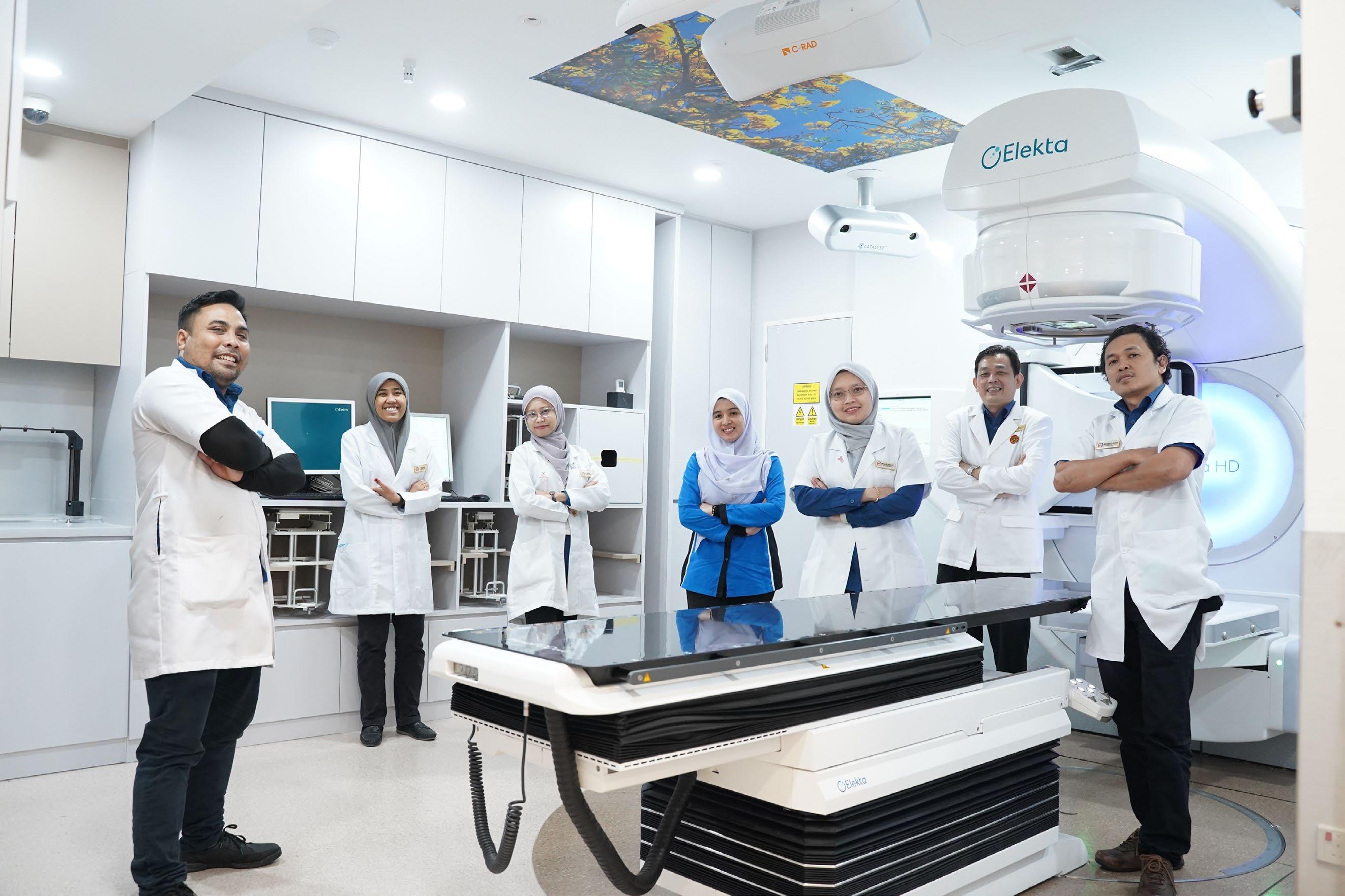














CENTRE F E CE ENCE Accident & Emergency Cardiology Endocrinology Fertility / Reproductive Medicine Haematology Neurosurgery Orthopaedic Surgery Paediatrics Respiratory Medicine Wellness Clinic Anaesthesiology Cardiothoracic Surgery Paediatric Surgery Radiotherapy & Oncology Vascular Surgery Microsugery EN / Otorhinolarygology Gastroenterology General Surgery Kidney / Nephrology Nuclear Medicine Paediatric Cardiology Radiology & maging Urology Breast & Endocrinology Colorectal / Gen Surgery Eye / Ophthalmology General Medicine Geriatric Medicine Neurology O stetric & Gynaecology


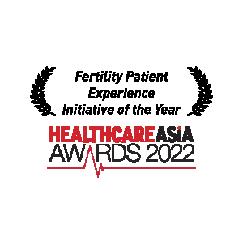


HEALTHCARE ASIA 39







Super Bear รถฉุกเฉินไดรับอนุญาตแลว กรุงเทพมหานคร #SavingYoungLives 2,000 critically ill children were well cared for and returned home safely. More than Our Pediatric Emergency Medicine Team can promptly evacuate, repatriate, and refer domestic & international children patients within 24 hours via: • Ambulance or Ground Transfer • Emergency medical motorlance • Air Ambulance (Sky ICU) • Jet Planes and Helicopter Medical Services Our Medical Transport Services have been accredited in the U.S. and Europe by The Commission on Accreditation of Medical Transport Systems (CAMTS and CAMTS EU), an international standard recognized worldwide for the safety of ground & air transport of patients suffering from accidents and all forms of acute/severe/critical/chronic & complex symptoms of accidents, cancer or complicated diseases. For more information, please contact : info@samitivej.co.th





Alleviate pain. Restore health. Extend life.
Six powerful words that inspire us to engineer the extraordinary, innovate life-transforming technologies, and create better outcomes for our world.
FROM OUR VERY FIRST STEP, WE FEEL COMPELLED TO MOVE.
It’s what drives us forward, to learn, to discover, to innovate and grow.
At Zimmer Biomet it’s our mission to alleviate pain and improve the quality of life for people around the world. To keep patients moving through life without pain and healthcare providers moving and supported throughout their careers.

Zimmer Biomet. Moving you forward. Find out more at www.zimmerbiomet.com This material is intended for health care professionals. All content herein is protected by copyright, trademarks and other intellectual property rights, as applicable, owned by or licensed to Zimmer Biomet or its affiliates unless otherwise indicated, and must not be redistributed, duplicated or disclosed, in whole or in part, without the express written consent of Zimmer Biomet. Visit www.zimmerbiomet.com for additional product information. ©2021, 2022 Zimmer Biomet 3633.1-APAC-en-Issue Date-2022-09

Moving You Forward ™
©2021
the
Engineering the extr ao rd i nar y
Medtronic. Medtronic, Medtronic logo, and Engineering
extraordinary are trademarks of Medtronic. All other brands are trademarks of a Medtronic company. UC202206921 EN












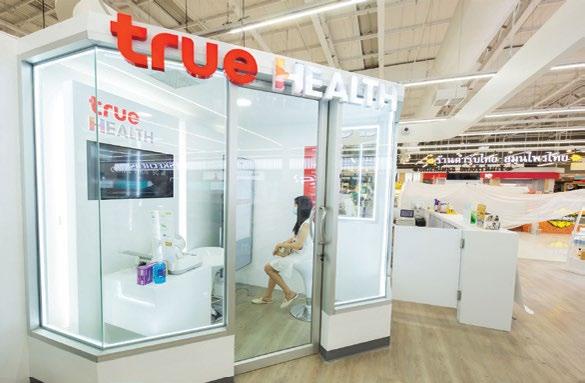


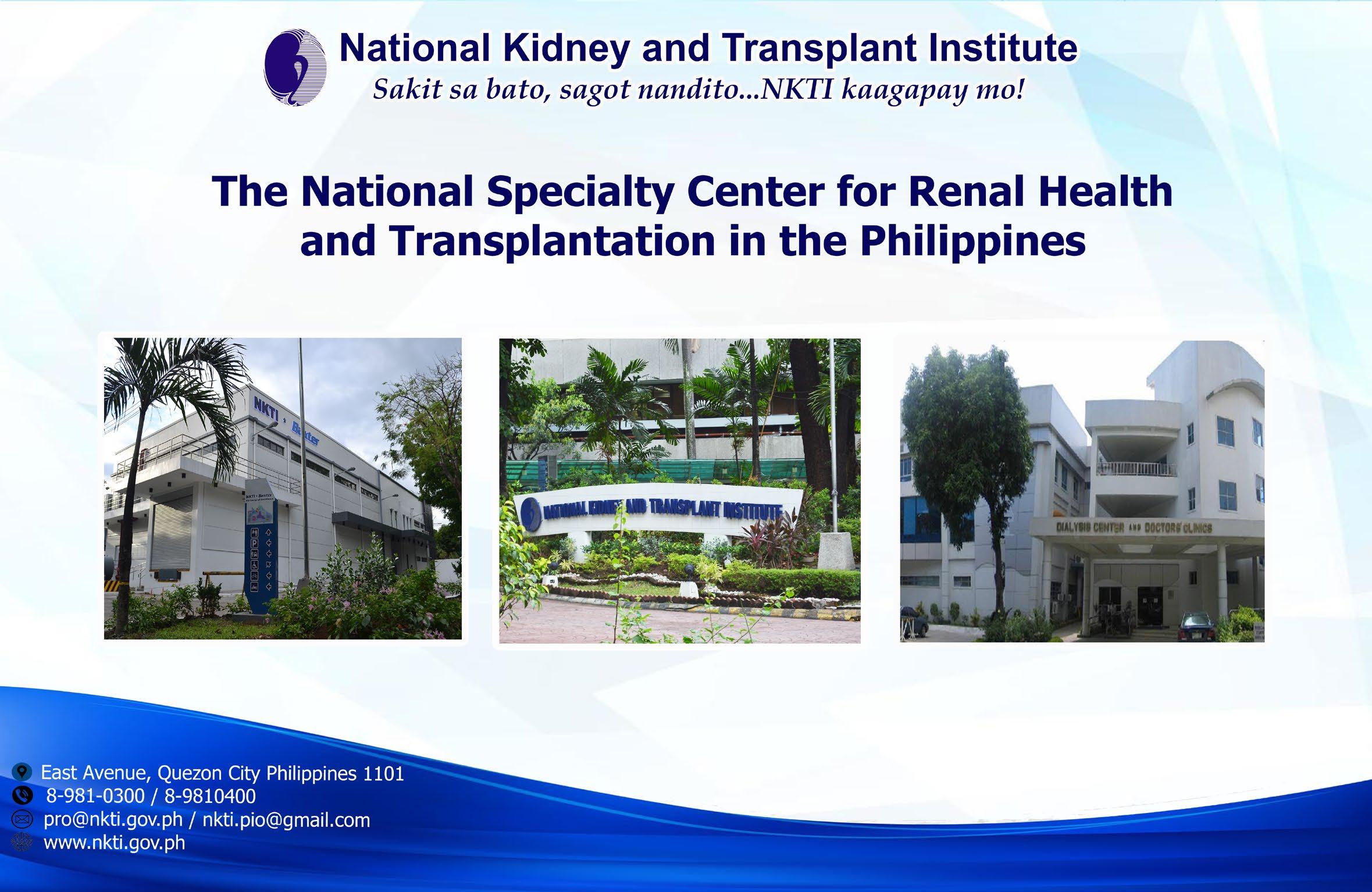
WE’LL GO FIRST
Innovation is at the core of everything we do. At Glaukos, we push the limits of science and technology to solve unmet needs in chronic eye diseases.


PM-GL-0075 All rights reserved. ©2021
Experience a world of firsts in vision care. Learn more at Glaukos.com.
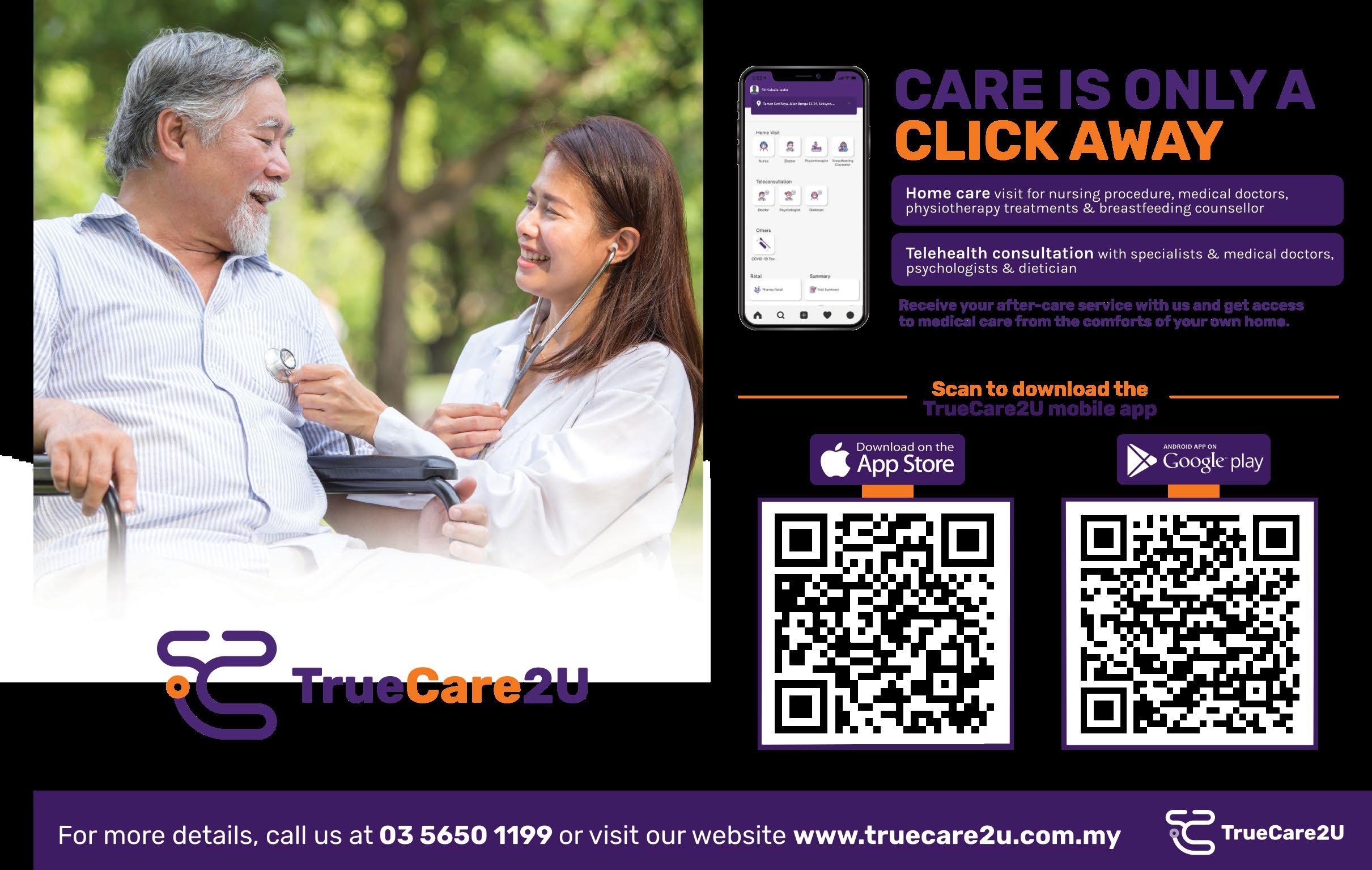








46 HEALTHCARE ASIA





Visit us at aligntech.com © 2022 Align Technology, Inc. All rights reserved. Invisalign, the Invisalign logo, among others, are trademarks and/or service marks of Align Technology, Inc. or one of its subsidiaries or affiliated companies and may be registered in the U.S. and/or other countries. Transform how you treat with the Align™ Digital Platform




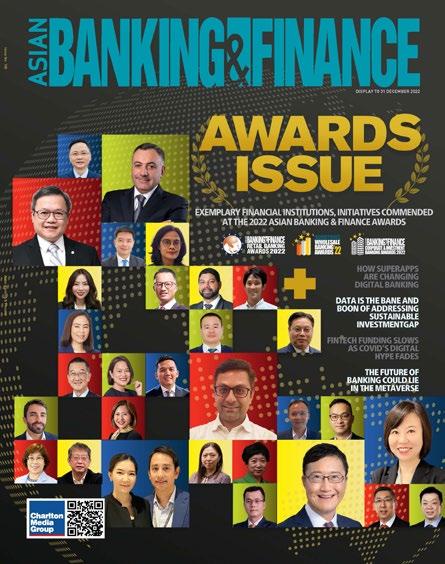

HEALTHCARE ASIA 3 MEDIA PUBLISHER In Print, Online, Mobile, Events, Awards, and Research ISSUE NO. Healthcare Asia www.healthcareasiamagazine.com The magazine for healthcare administrators and policy makers Display to 31 October 2022 MODELS FOR DIGITAL HEALTH TRANSFORMATION INDONESIA’S PONDOK INDAH GROUP HOSPITAL ACHIEVES HIGHEST ASSESSMENT IN DIGITAL MATURITY SINGHEALTH DUKE-NUS INVESTS IN ‘THE SEEDS OF THE FUTURE’ ONEONCO ALLOWS PATIENTS TO KICKSTART CANCER SUPPORT SYSTEM FOR $1 INTERNATIONAL AIDS SOCIETY TARGETS HIV’S ‘ACHILLES HEEL’ MALAYSIAN EYECARE CLINIC ELEVATES SERVICES WITH AI Pondok Indah Hospital BUSINESS TO BUSINESS ASIA’S LEADING
VEJTHANI
The Finest Healthcare Destination
A JCI accredited quaternary healthcare provider that implements cutting-edge medical technologies, internationally trained specialists and world-class healthcare standards with authentic Thai hospitality.


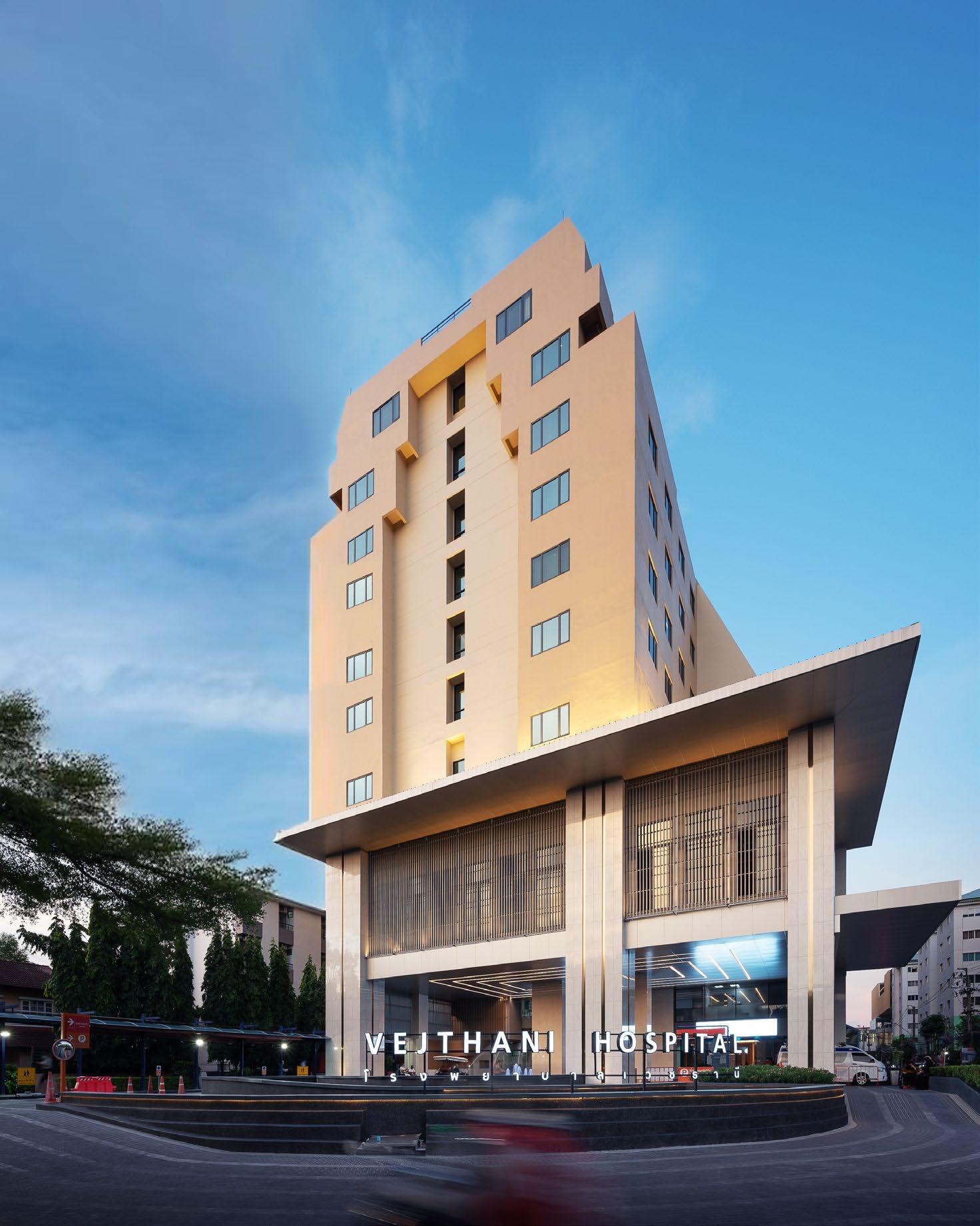


What makes unique
VEJTHANI
?
Patient satisfaction is our top priority. With our outstanding medical and patient care services, we ensure to cater every aspect of your needs with utmost care.
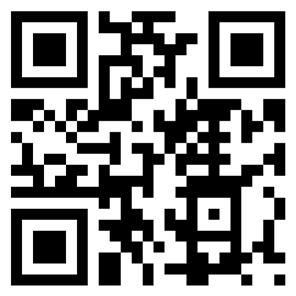
4 HEALTHCARE ASIA Vejthani Hospital @vejthani
+66
website














































































































































































































































